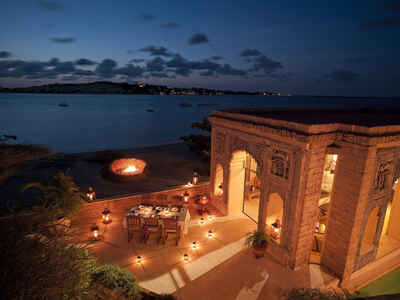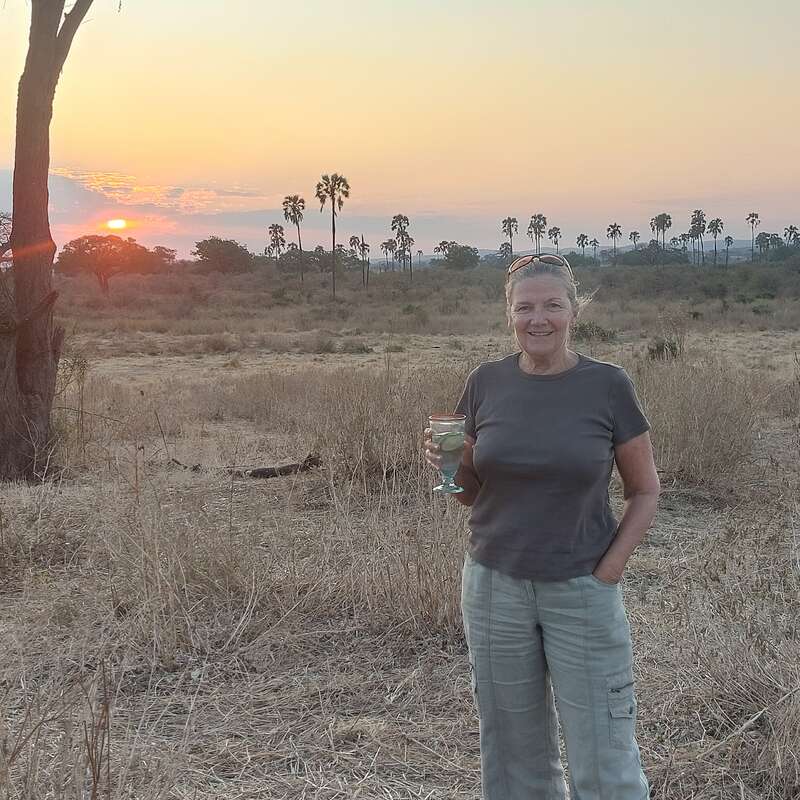About The Majlis
The Majlis, Manda island’s biggest-ever building project, opened in 2009.
Privately owned by an Italian family with a long association with Africa, it started life as a family holiday home and became a hotel almost by accident. Located on the west-facing shore of Manda island, it faces the village of Shela across the Lamu Channel.
If you want air-conditioning, comfy beds, satellite TV, shiny surfaces and a glittering pool on your doorstep, then The Majlis might perfectly match your needs. After the major build-up of its reputation, however (and there is no question that many guests love the hotel) we were disappointed by the ho-hum food and the incoherence of the public areas.
Our view
If you want air-conditioning, comfy beds, satellite TV, shiny surfaces and a glittering pool on your doorstep, then The Majlis might perfectly match your needs. After the major build-up of its reputation, however (and there is no question that many guests love the hotel) we were disappointed by the ho-hum food and the incoherence of the public areas.
Accommodation
27 rooms in 3 villas
Children
Fine for all ages.
Open
All year
Activities

Birdwatching

Boat trip

Scuba-diving

Snorkelling

Watersports
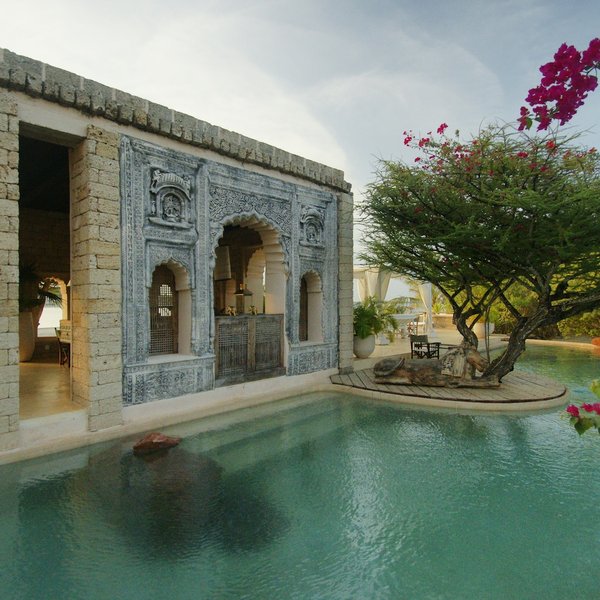
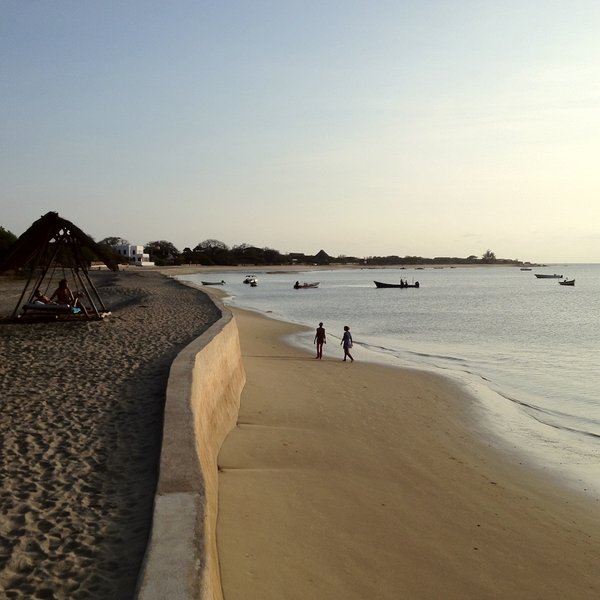
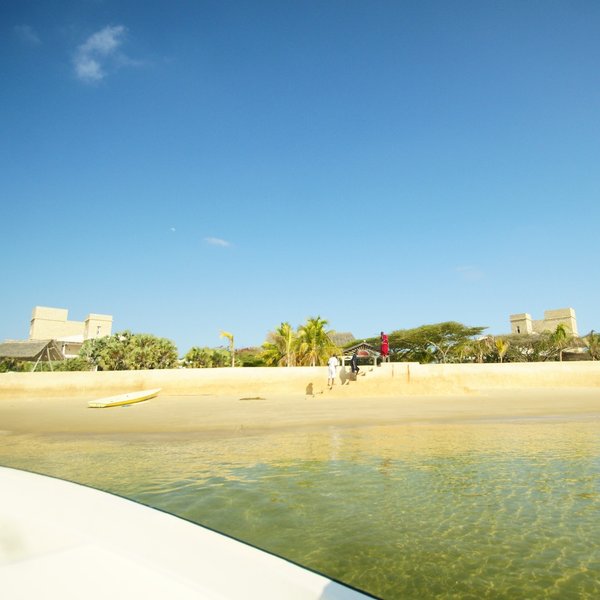
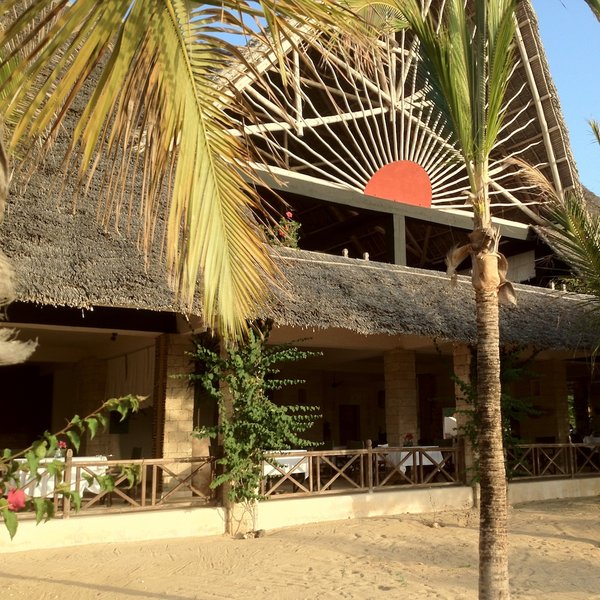
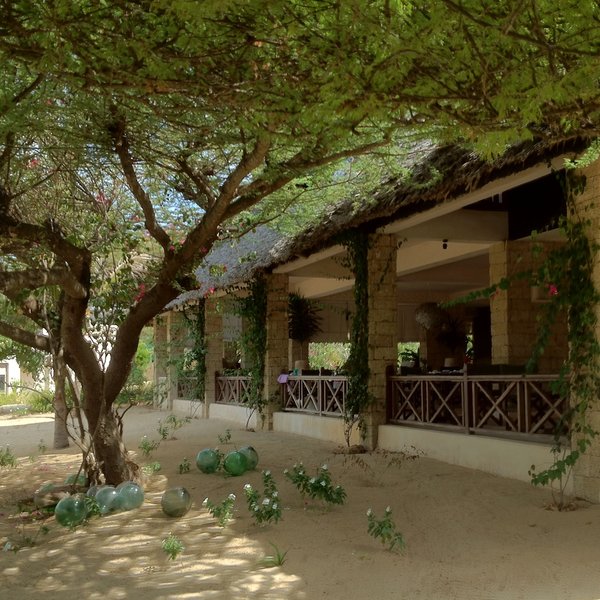
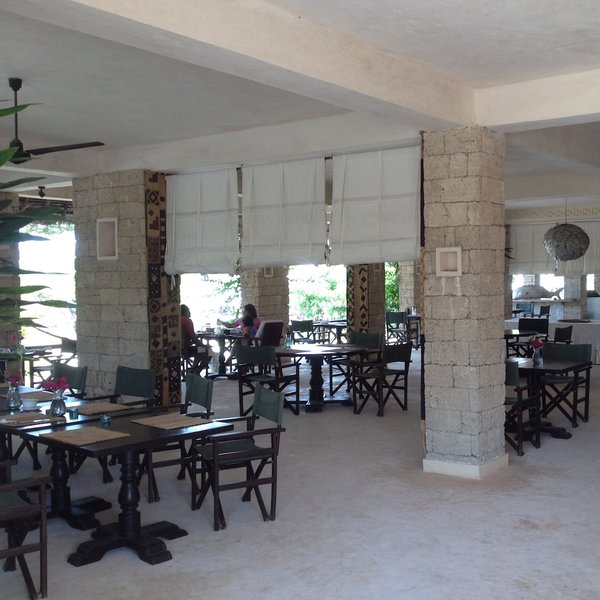
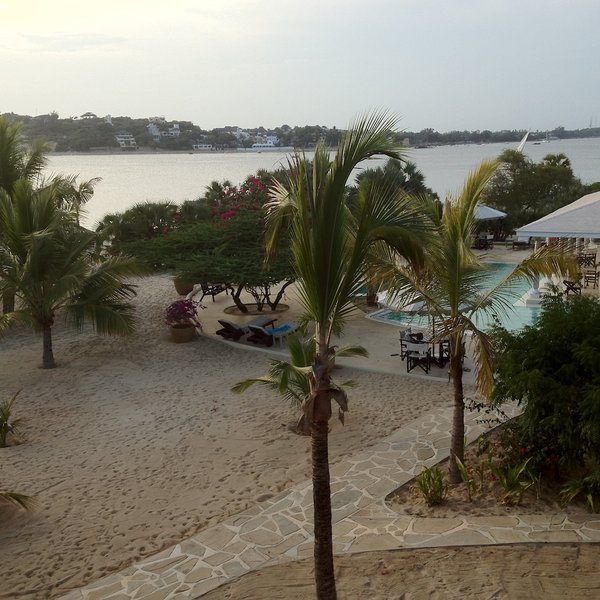
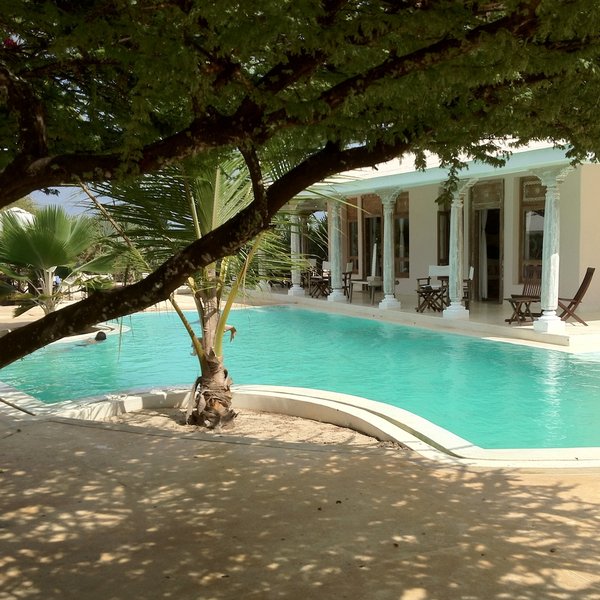
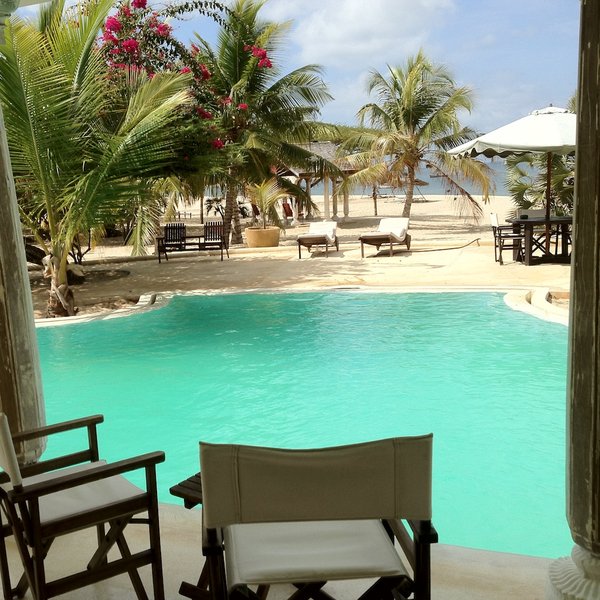
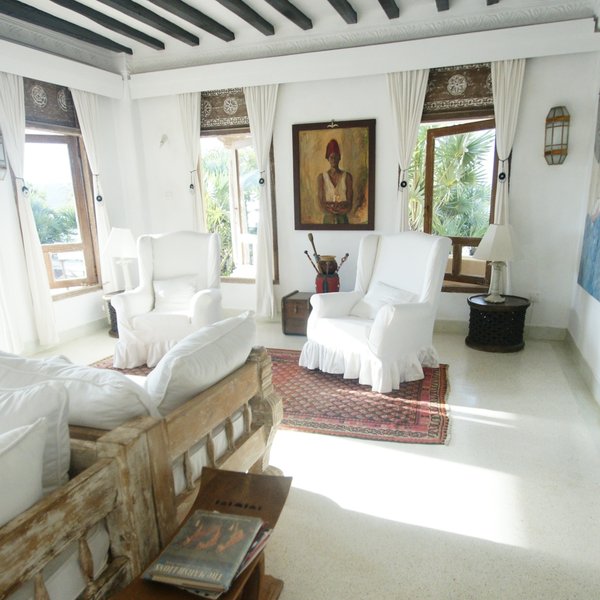
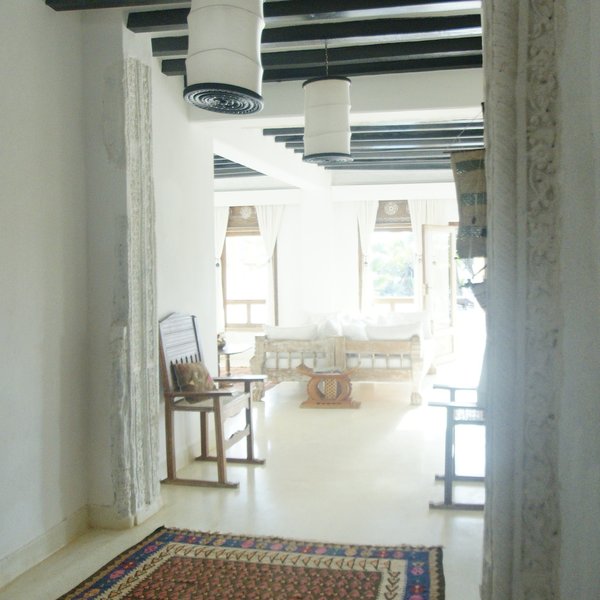
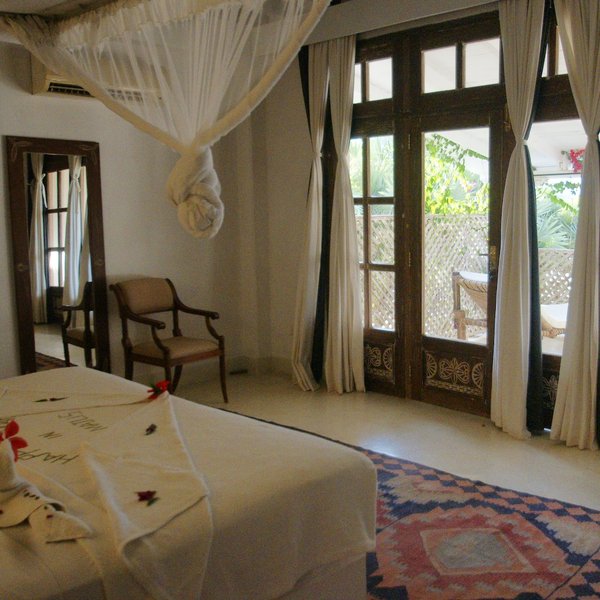
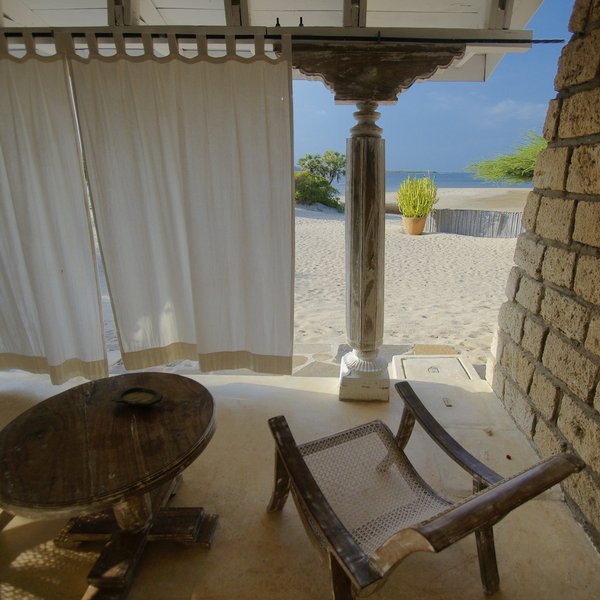
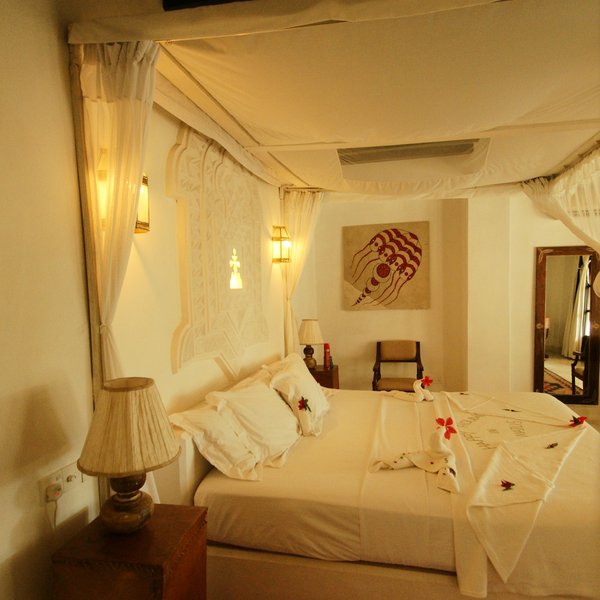
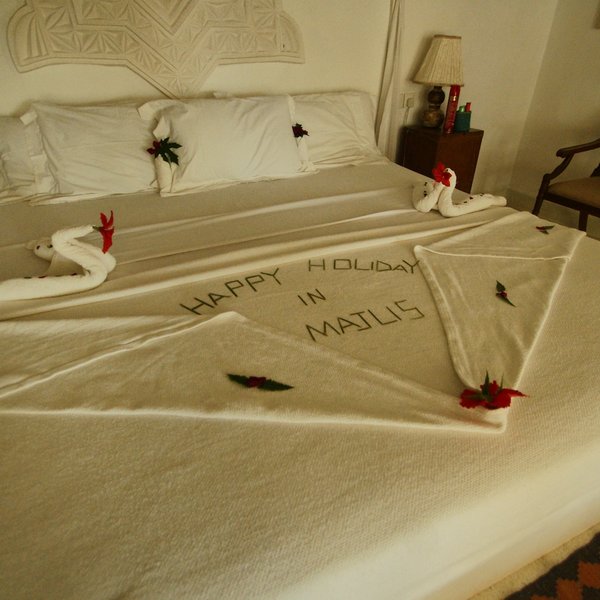
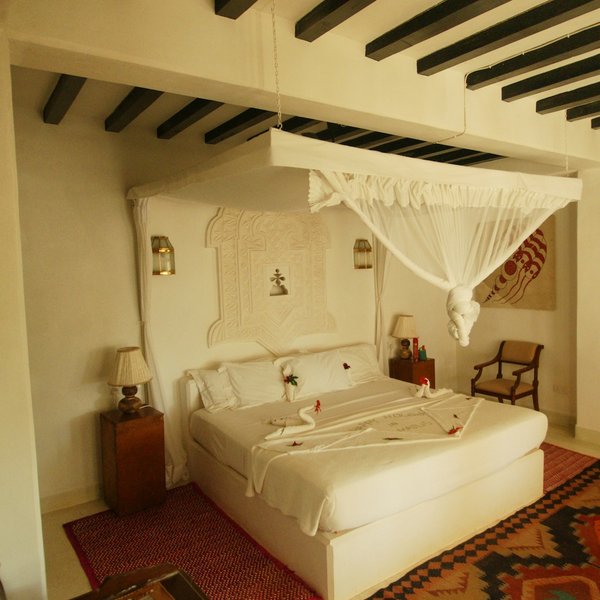
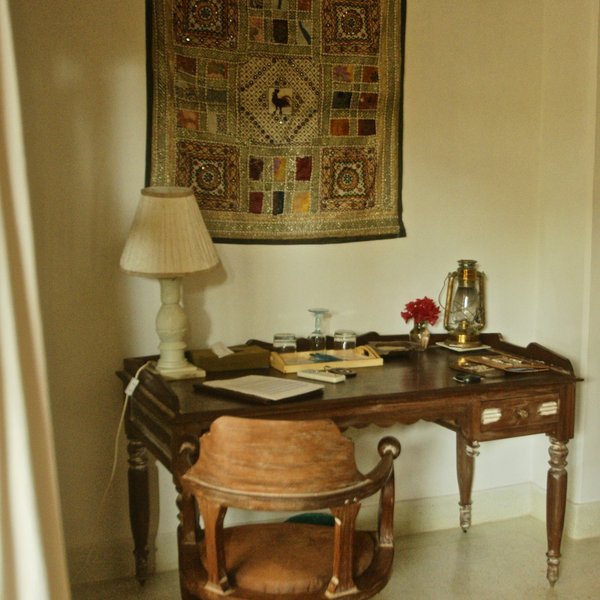
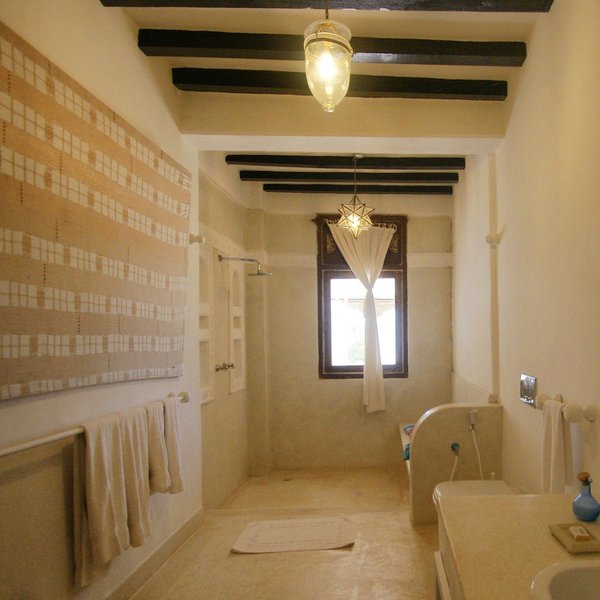
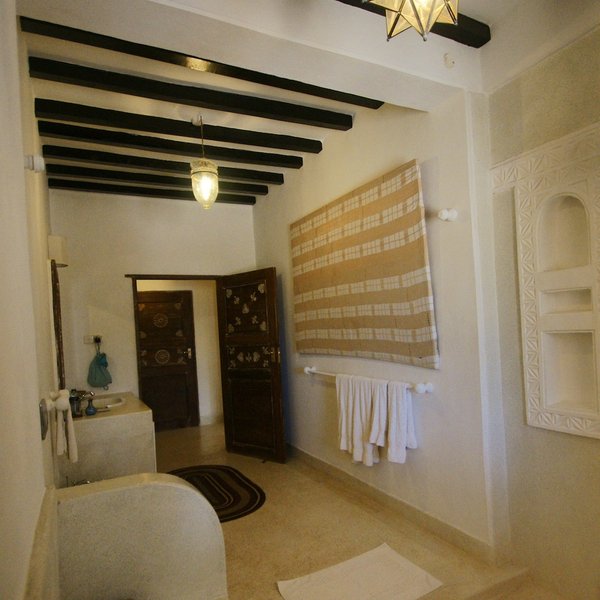
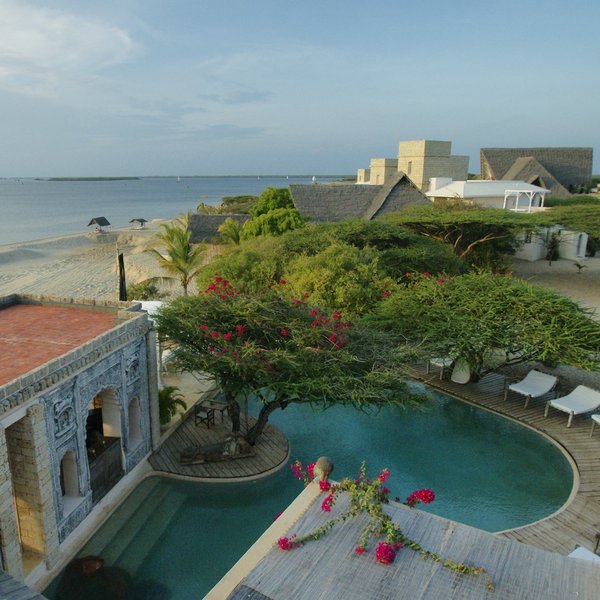
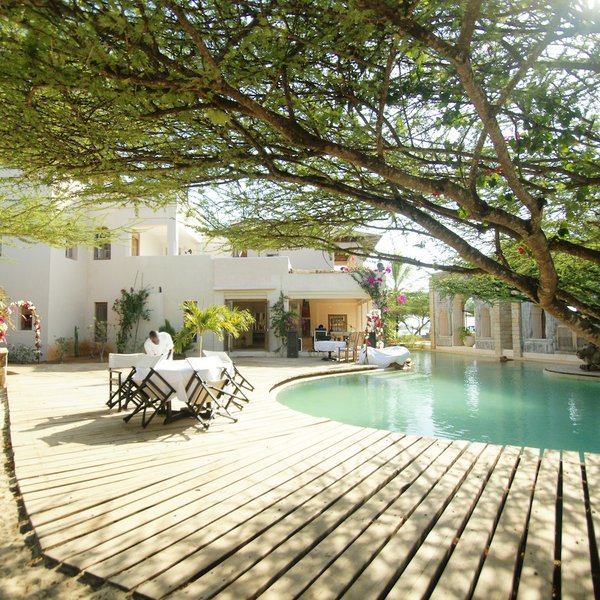
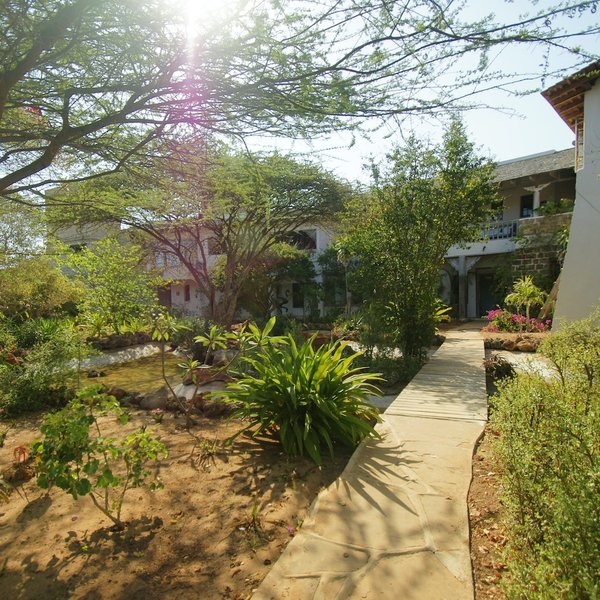
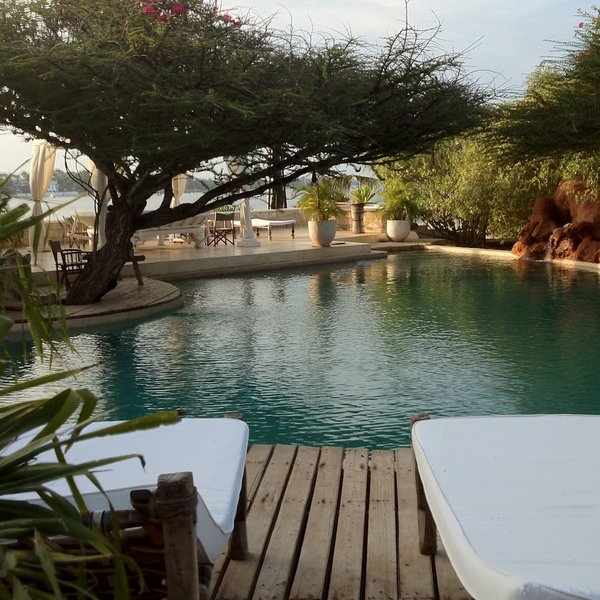
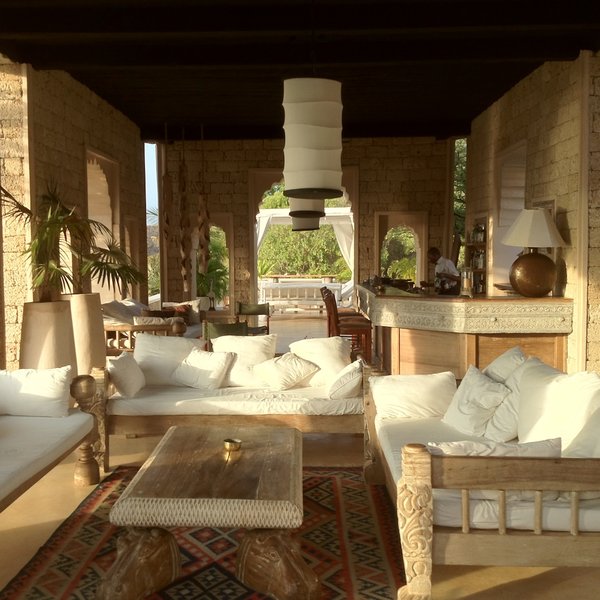
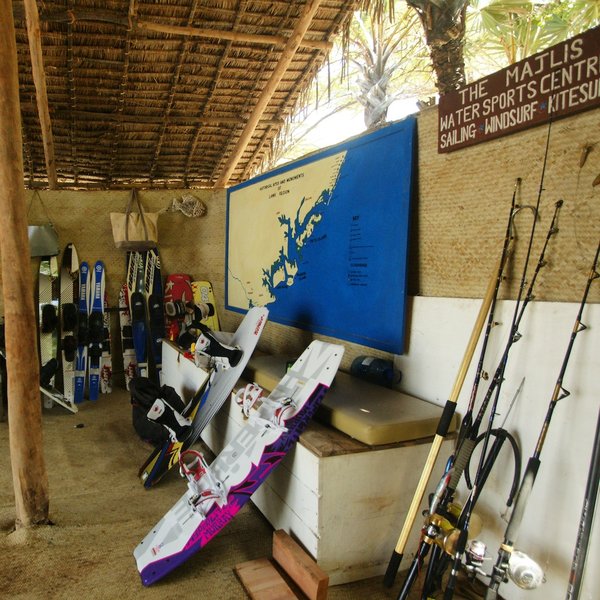
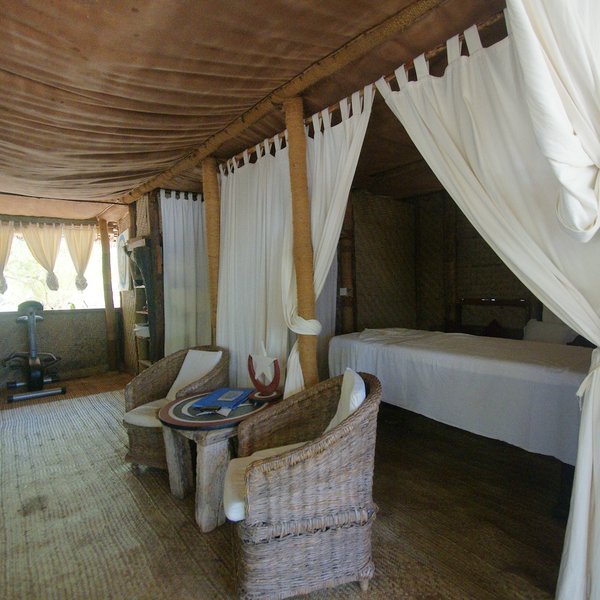
Expert Africa's gallery
When we travel we take lots of photos ourselves to give you a real and un-edited view of the holidays. See our 26 pictures and 1 videos of The Majlis to get the candid view.
View galleryThe Majlis: Our full report
The Majlis, Manda island’s biggest-ever building project, opened in 2009.
Privately owned by an Italian family with a long association with Africa, it started life as a family holiday home and became a hotel almost by accident. Located on the west-facing shore of Manda island, it faces the village of Shela across the Lamu Channel.
Most people arrive in a lodge motorboat from the jetty at Lamu airport a few kilometres away. Be prepared with the right footwear to wade ashore once the boat has beached, or go in bare feet – athough depending on the time of day the sand can be scorching hot. You walk for a few metres through scattered palms and bushes up to the rooms, partly on paths of crazy paving laid onto the sand. There is no reception as such.
Apart from the palm-scattered sandy gardens at the front, which merge seamlessly into the beach, the main public areas consist of the big ground floor restaurant-dining room, with open sides, where all meals are served. This is a reasonably pleasant place to eat, but the sea views you’d expect are screened by the sandy palm gardens in front. The floor above the dining room is a very large bar-lounge area, with large-screen TVs and decent views across the Lamu Channel to Lamu island and the village of Shela. This huge, open sided lounge, under a roof of makuti palm leaf tiles said to number more than a million, is a good place to sit at sunset, though note that depending on the season it isn’t open throughout the day.
The rooms are located in three villas, two of which are similar ("Kusi" to the north, "Kaskasi" to the south), share a swimming pool outside the Kusi villa, and contain the superior and deluxe rooms. The third, larger villa ("Majlis Villa"), on the southern side of the plot, is the original building, complete with spacious interiors, faux tribal detailing and a large temple-like pavilion – a majlis (an Arabic word that means assembly ) – that graces the hotel's second swimming pool and looks as if it has come from the set of Raiders of the Lost Ark. This is where the hotel’s rather spectacular suites are located.
The superior and deluxe rooms are accessed via a shared lounge area, lined with art and ephemera, at the front of each villa. From the lounge, a short corridor leads into each villa, giving access to the superior rooms facing onto the gardens at the rear and the deluxe rooms with verandas facing onto the beach.
The Majlis’ rooms – both superior and deluxe – are a good size and smartly decorated, with narrow black beams striping the ceilings, in emulation of traditional, Swahili mangrove-pole architecture. Some rooms have extra ante-rooms that might originally have been intended as living rooms or even dressing rooms.
We found the beds to be super-comfortable – always a great joy when hard, lumpy or foam mattress beds are so common in coastal hotels. And they have lovely cotton sheets and really good pillows. Their mosquito nets are for show rather than defence against mosquitos, as they don’t close properly at the top. In any case, the air-conditioning units are so effective that self-respecting mosquitos will stay well clear. Even so, with no shutters on the huge windows, we had to keep the AC powering away to maintain a low temperature during the day as the sun beat onto the glass. Some rooms are nicely furnished, while others include inappropriately fussy and formal chairs and tables and nowhere to really relax apart from the bed itself. There are recliners on the verandas.
The large bathrooms are well finished, with some Swahili plaster-work, and furnished with oversized shower heads, Italian-style bidets and toilets, and single hand basins. They are provided with anonymous toiletries in glass flasks. We found the showers in our two rooms inconsistent – one very powerful, the other giving a dribble.
The suites in the main house are much larger than the superior and deluxe rooms, furnished to a much higher standard and sumptuously decorated.
Please note: the upstairs rooms at The Majlis are not suitable for young children because of their balconies.
Both of the free-form swimming pools - the one on the north side, shared by the two villas containing the deluxe and superior rooms and the one on the south side by the main house, where the suites are located – are large and well maintained. There is a bar inside the majlis pavillion by the south pool, but no pool bar at the north pool. You can order drinks to be brought to the tables near the north pool, though we found the wait staff inattentive in this area. There is no beach bar.
Activities at The Majlis include all the usual water sports. The hotel has a shack on the beach where you can borrow or rent equipment, and friendly instructors on hand. Kayaking, Laser sailing and windsurfing are all free of charge (the latter two only available if you have experience), as is paddle-surfing.
Activities available for an extra charge include:
- Jogging, mountain biking, and accompanied swims across the channel (700m);
- Tubing, and double-, mono, wake- and knee-boarding;
- Dhow sailing in Lamu Channel;
- Snorkeling trips to Manda Toto or Kinyika Rock;
- Rod and line fishing in the creek and over the reef;
- Half-day game-fishing trips (in season, from November to April);
- Trips around Lamu island or Manda island;
The Majlis also has a kite-surfing school, with a full-time experienced teacher. You’re transferred a short distance by boat from the hotel to the kite-surfing spot.
If you want to explore Lamu town, or the ruins of Takwa on Manda island, you can go with a guide for some cultural insights.
Most guests will be delighted to find that the beach in this part of Manda, which stretches on the north side for half a kilometre or so to where mangroves begin, and to the south for more than a kilometre towards the ocean, is perfect for strolling on – safe and always worth beachcombing. You won’t be accosted by beach boys, as there aren’t any, and a stroll along the shoreline makes the perfect start to the day as the sun illuminates the dunes across the channel. Or for that matter the perfect end to the day, as it dips behind Lamu island’s silhouetted palm trees.
The one major fly in the ointment on the beach is the 250-metre-long sea wall and landfill area being built by the hotel. This appears to be a direct response to the possibility that The Majlis has put up large buildings much too close to the sea, on a tidal channel (the Lamu Channel) subject to constantly changing patterns of erosion and deposition. Their defensive, 2-metre sea wall – a major feat of construction in its own right – is already standing and causing its own problems for properties along the Manda coastline as it blocks the normal movement of the tides. And filling in the deep trough behind it, with sand dragged by a bulldozer from further up the beach, is proving to be a never-ending task. All of which makes the immediate beachfront area in front of the hotel less than ideal, compared for example with the completely natural beach just 500m down the channel.
Taking a boat across the channel to Shela village on Lamu island (a five-minute hop) gives you the chance to eat or have a drink at a number of spots, notably the fifty-year old Peponi Hotel.
Activities
Birdwatching
Boat trip
Scuba-diving
Snorkelling
Watersports
Families & children
- Attitude towards children
- Children are welcome
- Property’s age restrictions
- None
- Special activities & services
- There is a jungle gym, although we didn’t see it. Babysitting in rooms could be arranged through housekeeping, but there are no qualified child carers at the hotel.
- Equipment
- High chairs and baby cots are available.
- Generally recommended for children
- Although their pools are probably the best in Lamu, we think most children would be a bit bored at The Majlis, unless other kids are around to play with.
- Notes
- Please note: the upstairs rooms at The Majlis are not suitable for young children because of their balconies.
Food & drink
- Usual board basis
- Full Board
- Food quality
- The food at The Majlis is not its strongest suit: our four-course dinner, with choices, started unimaginatively with a tempura calamari that consisted of four battered rings, mayonnaise and a scratch of salad. For the second course one of us had chickpea and rosemary soup based on a fish stock (not bad but not much of it) and one of us had a slightly over-salted vegetarian risotto, though the rice still had some nutty texture. Choices for the third course included a basic chicken biriani and rice and we also sampled an expressionless fish pizzaiola, with boiled potatoes and steamed veg. The puds available were a fruit salad, an insipid crème brulée, chocolate ice cream – very obviously melted and re-frozen – and watery sorbets. Despite “tea or coffee" being on the menu neither was offered.
Breakfast the next morning felt limited, and this despite there being a number of other guests, as there had been for dinner. The mango juice on the menu was finished, and the pawpaw juice was more of a purée.
We were shown around the kitchens – which are modern and clean – so they are certainly not an explanation for why such feeble fare is produced here. - Dining style
- Individual Tables
- Dining locations
- Indoor and Outdoor Dining
- Further dining info, including room service
- We were told there is no charge for room service.
- Drinks included
- Drinks are extra, and relatively expensive by Kenyan standards. Sodas cost around U$3, beers U$5, house wine from U$5 a glass and non-premium spirits with a mixer from U$5-9. Wines from the wine list start at U$27 for a bottle of Soave or U$25 for Chianti.
Getting there
- Location
- Kenya Coast, Kenya
- Ideal length of stay
- 3 days-plus
- Directions
- Lamu’s airstrip is 15 minutes away by boat.
- Accessible by
- Fly-and-Transfer
Communications
- Communications
- There is reasonable mobile phone network from Safaricom, Airtel and Orange. There are two Wi-fi networks, one of which supposedly works in a very wide radius, though we found them both a bit patchy.
- TV & radio
- There is satellite TV throughout, with all the channels, and big sports screens in the bar-restaurant and in the shared lounges of each villa.
- Water supply
- Transported in
- Water supply notes
- The Majlis laid a pipe across the Lamu Channel to bring water from a borehole in Shela. This water is filtered and then distributed to a water tank beneath each villa. All the drinking water is bottled Keringet brand.
Health & safety
- Malarial protection recommended
- Yes
- Medical care
- There are three first aid kits. A private doctor (Dr Nureen) can always be called over from Lamu town’s Spanish hospital. A helicopter could land on the beach in an emergency.
- Dangerous animals
- Moderate Risk
- Security measures
- There are Maasai askaris on duty around the hotel during the day. There is a barbed wire fence through the mangroves behind the hotel and the beach and sea are to the front, where three security posts are staffed by security staff at night.
- Fire safety
- Fire extinguishers are scatttered around the hotel and staff fire-training is done regularly.
Useful info
- Disabled access
- On Request
- Laundry facilities
- Laundry is available daily at an extra charge. It is machine-washed, line-dried or cold-tumble-dried and ironed.
- Money
- There are safes in the rooms. Foreign exchange can usually be offered at the rate of the day.
- Accepted payment on location
- All major currencies (US dollars, Kenya shillings, euros and pounds sterling) are accepted for cash payments at the day’s rate. MasterCard, Visa and Amex cards can all be accepted for payment with a surcharge of 5%.
Plan and book your trip with Expert Africa
All of our trips are tailor-made, so we'll always adapt them to suit you. Talk to an Expert and let us plan and arrange your perfect trip.

Talk to an Expert
Call or email us now! We’ll match you with the Specialist in our team who is best suited to help you. Then together we can start planning your trip.

Set up your itinerary
Based on our experience and your ideas, your specialist will create a detailed, costed itinerary. We’ll refine it together, until we have a trip that you’re perfectly happy with.

Prepare for your trip
The same Specialist will make the seamless arrangements for your trip, send you detailed travel documents, and be available to answer any questions before you depart.

Travel with peace of mind
After you set off, you’ll be cared for by our partners in Africa, most of whom have worked with Expert Africa for decades. And if you ever need us urgently, we’re available 24/7.

When you return
We love to learn about your trip, and so will always be grateful if you’ve the time to give feedback to your Specialist when you return.
The Majlis's location
Look closer at the environment and surroundings of The Majlis.
Other lodges in Kenya Coast
Alternative places to stay in this same area.
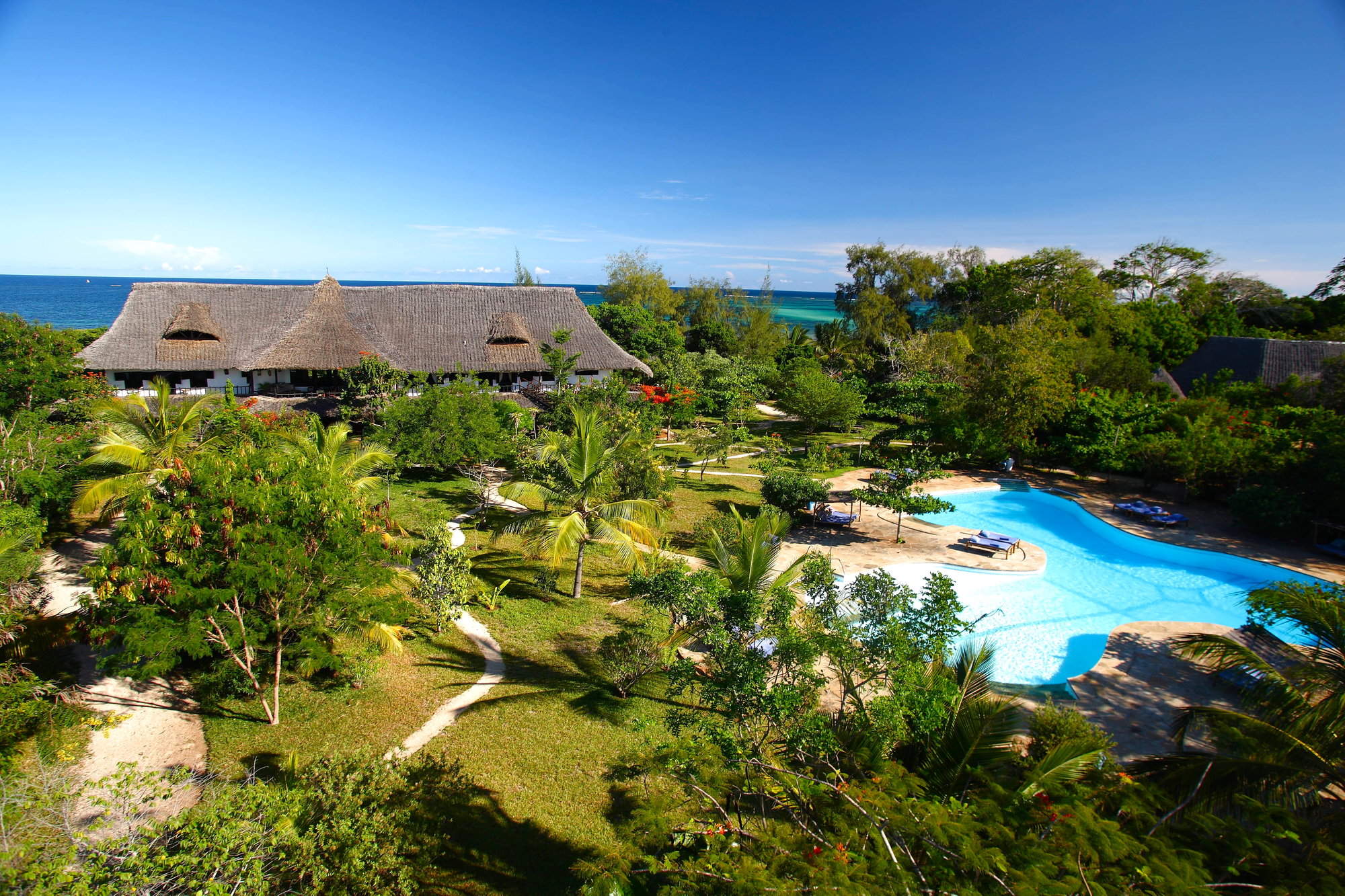
Kinondo Kwetu
Kinondo Kwetu is a small, owner-run, all-inclusive boutique lodge of exceptional quality situated on a remote stretch of beach south of the busier Diani Beach area.
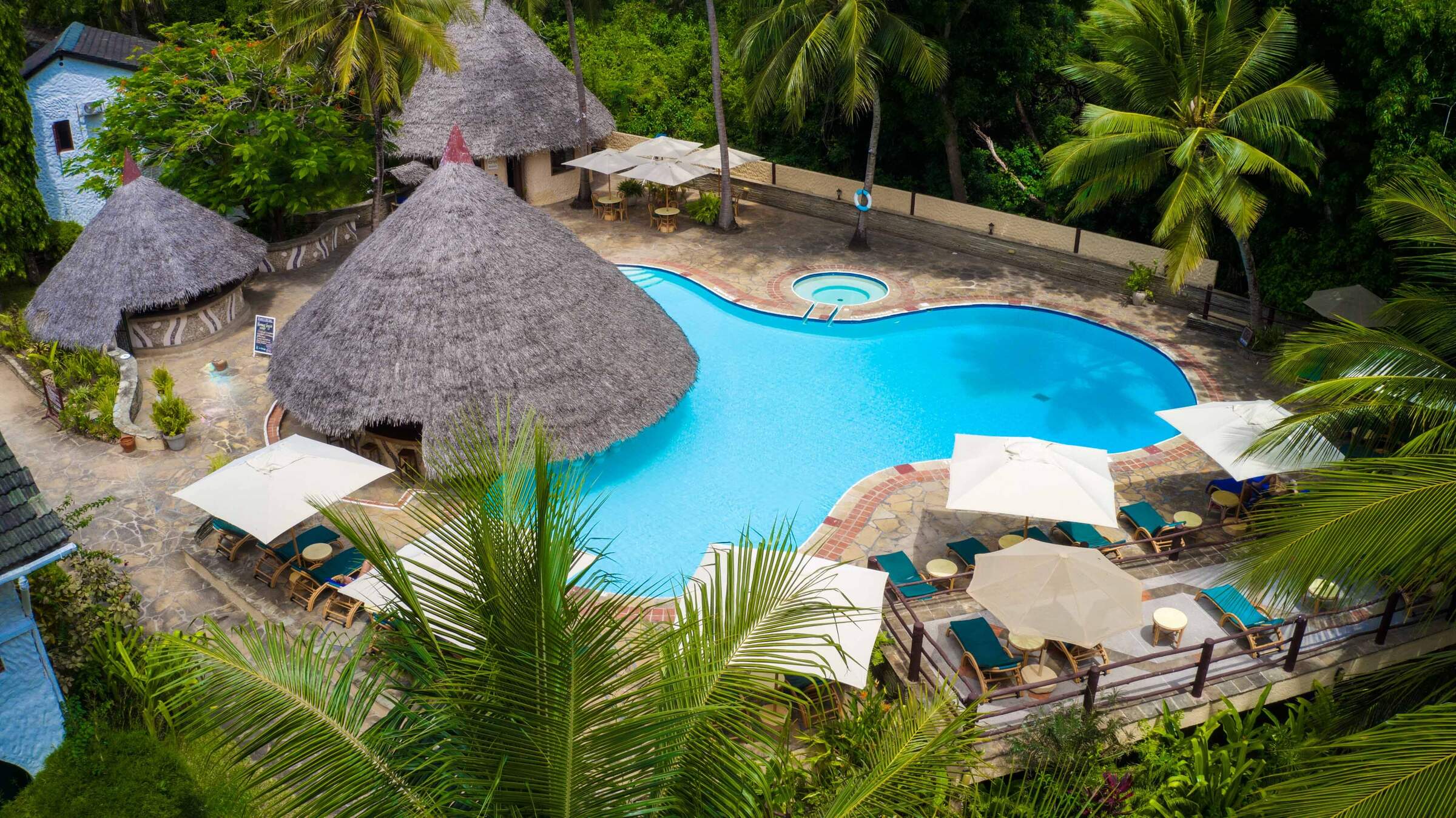
Pinewood Beach Resort
Pinewood Beach Resort is a relaxed resort-style hotel at the far south end of Diani Beach - an area known as Galu Beach.
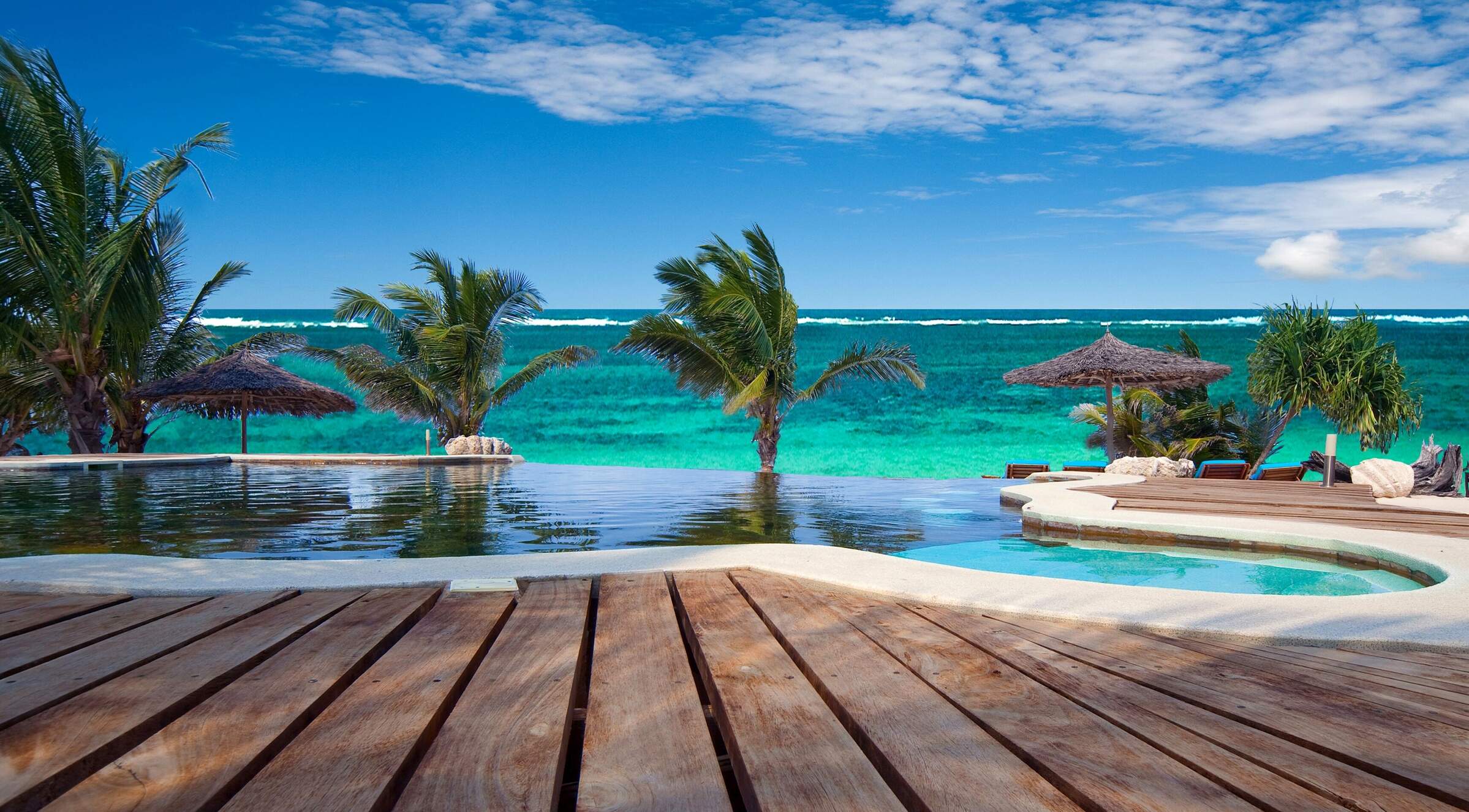
Water Lovers
Water Lovers is a popular, low-key beach hotel in a central location on Diani Beach on the south coast of Kenya.
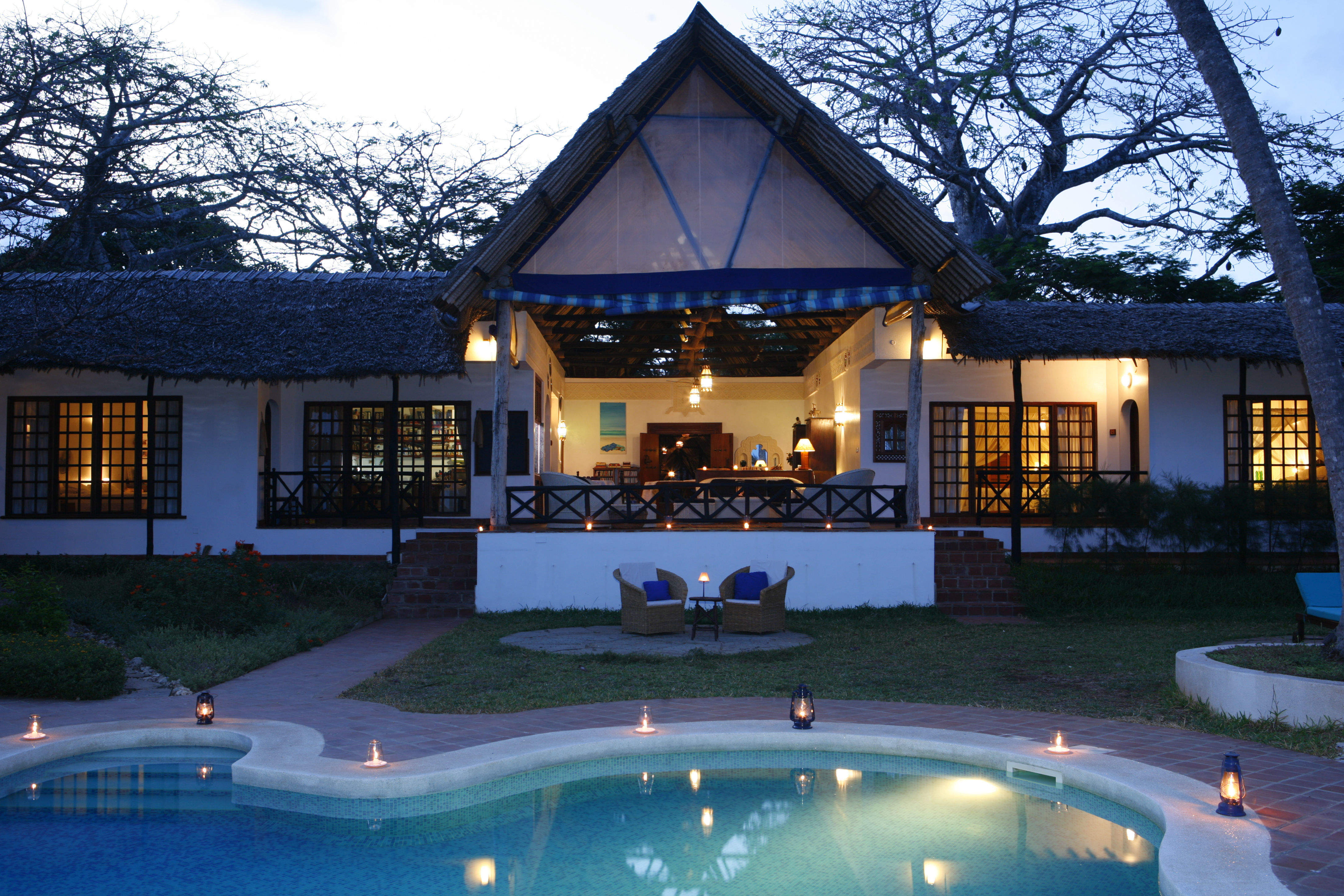
Asha Boutique Hotel
Diani Blue is a low-key but stylishly comfortable small guesthouse, with high levels of service, in a busy, central part of Diani Beach.
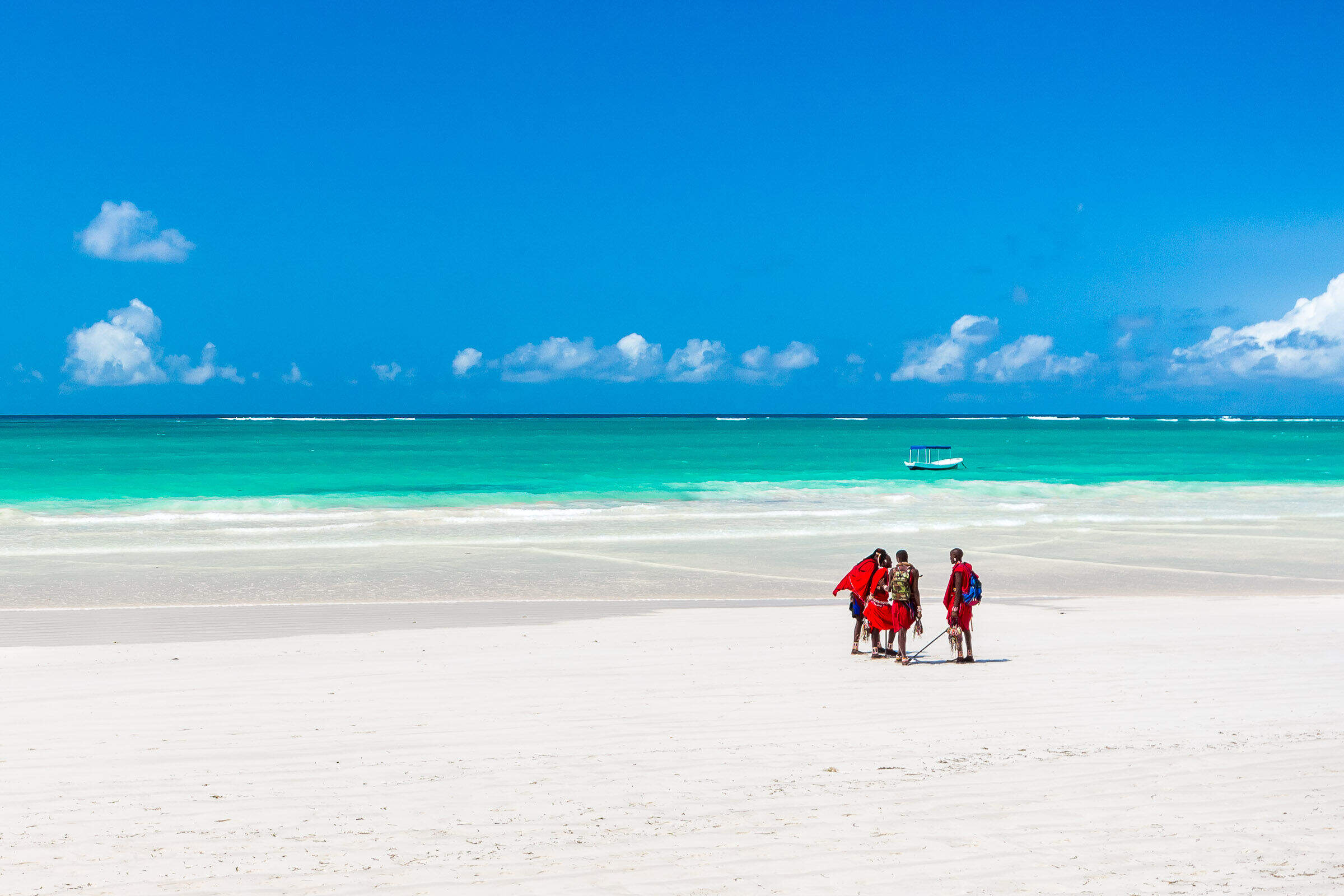
The Sands At Nomad
The Sands At Nomad is a good-value, laidback, family friendly resort with lots of Swahili character.
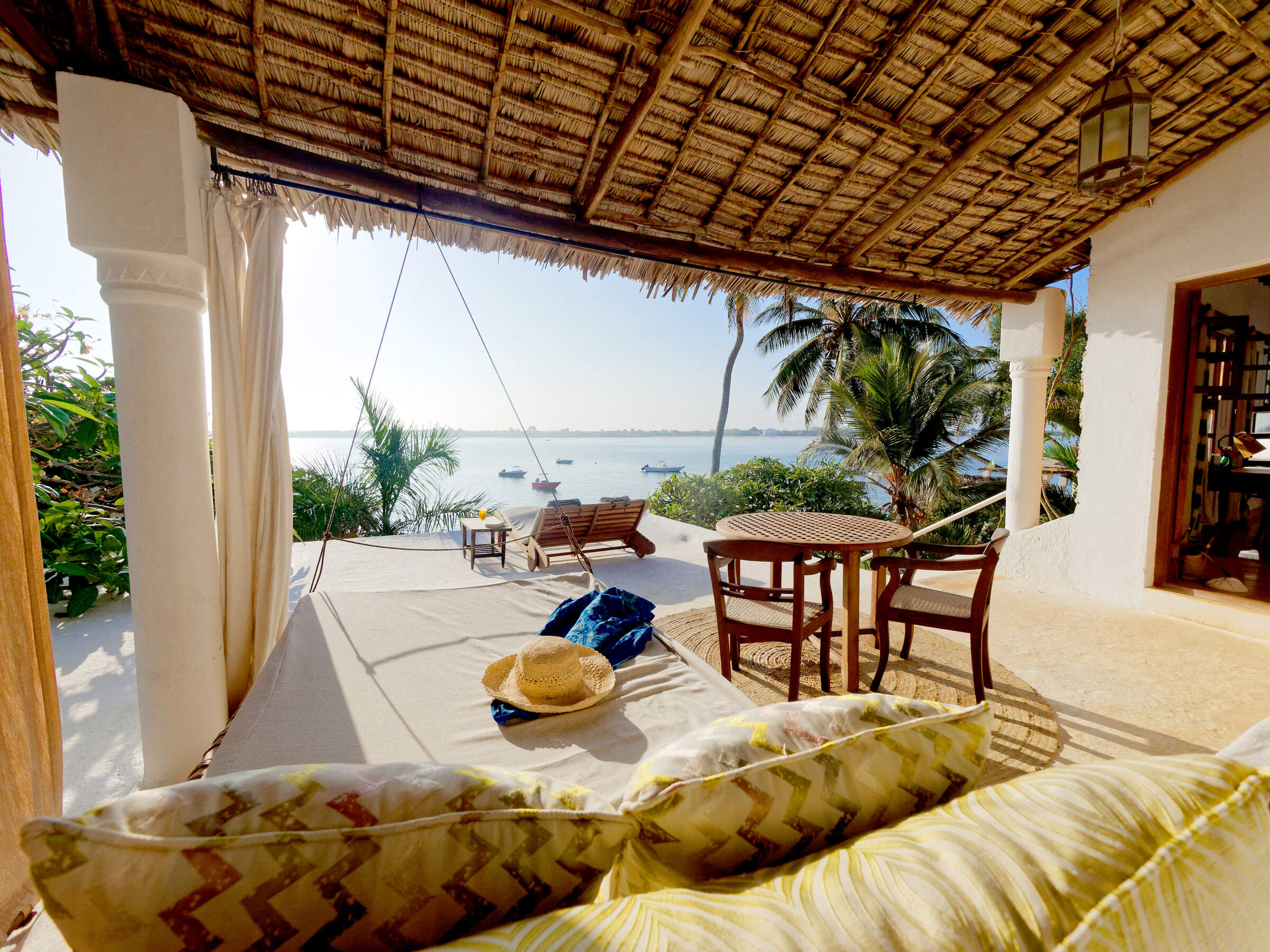
Peponi
Peponi is a long-established beach hotel, renowned for its good food, located in the village of Shela on the south side of Lamu island.
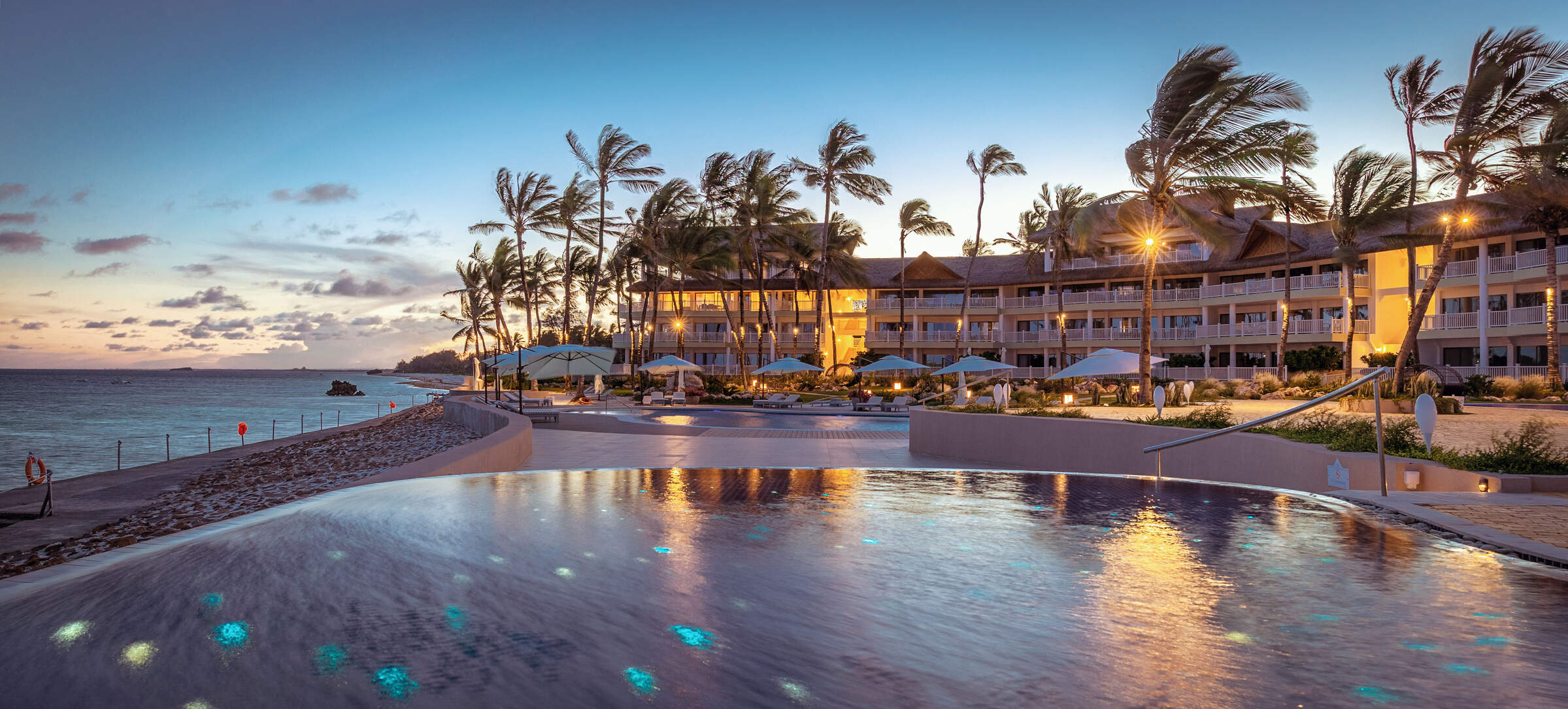
Hemingways Watamu
Long-established resort hotel with a strong British following and a good reputation for deep-sea fishing.
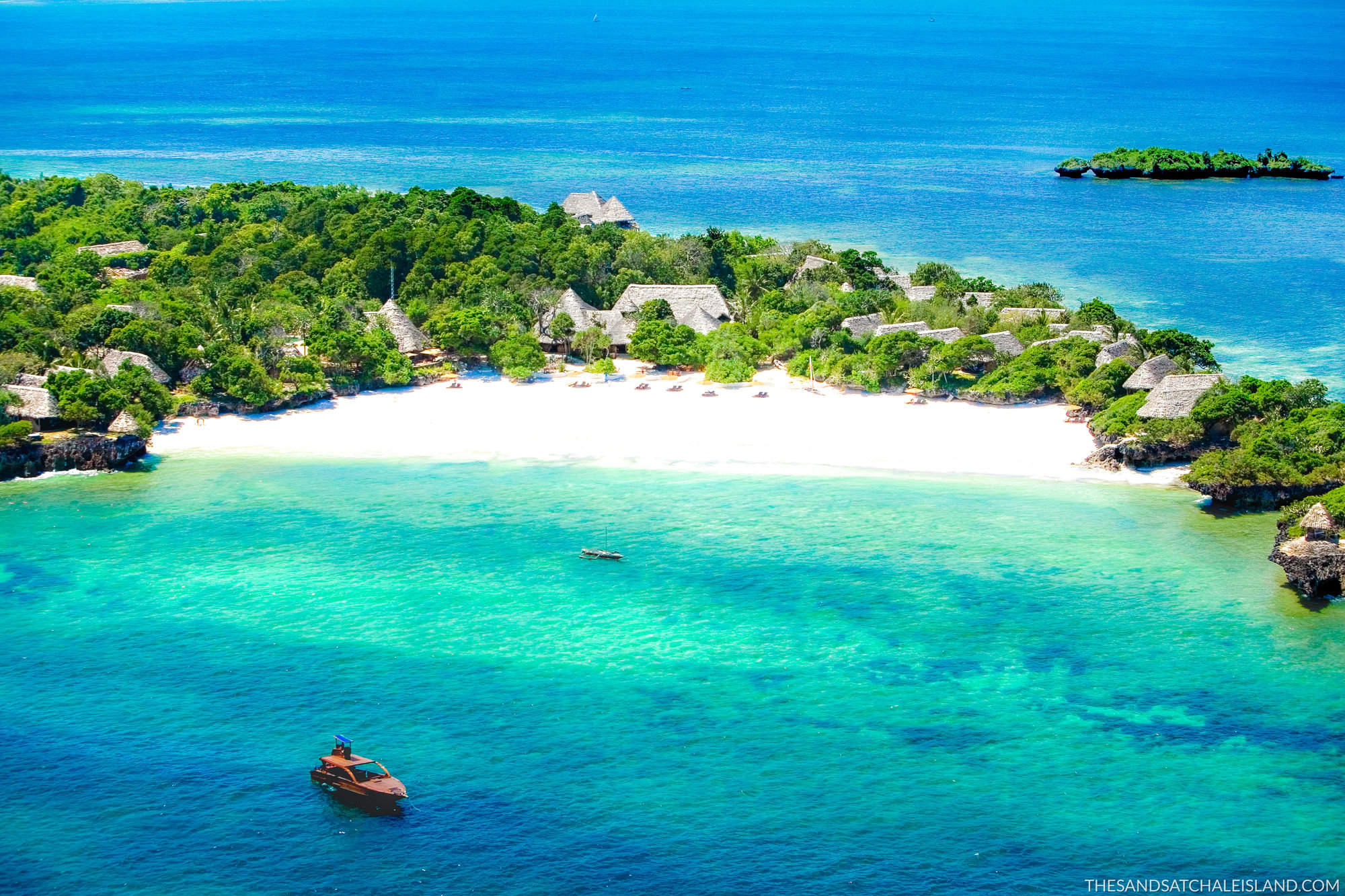
The Sands at Chale Island
The Sands at Chale Island is a beach resort offering plenty of activities and beautiful flora and fauna all around.
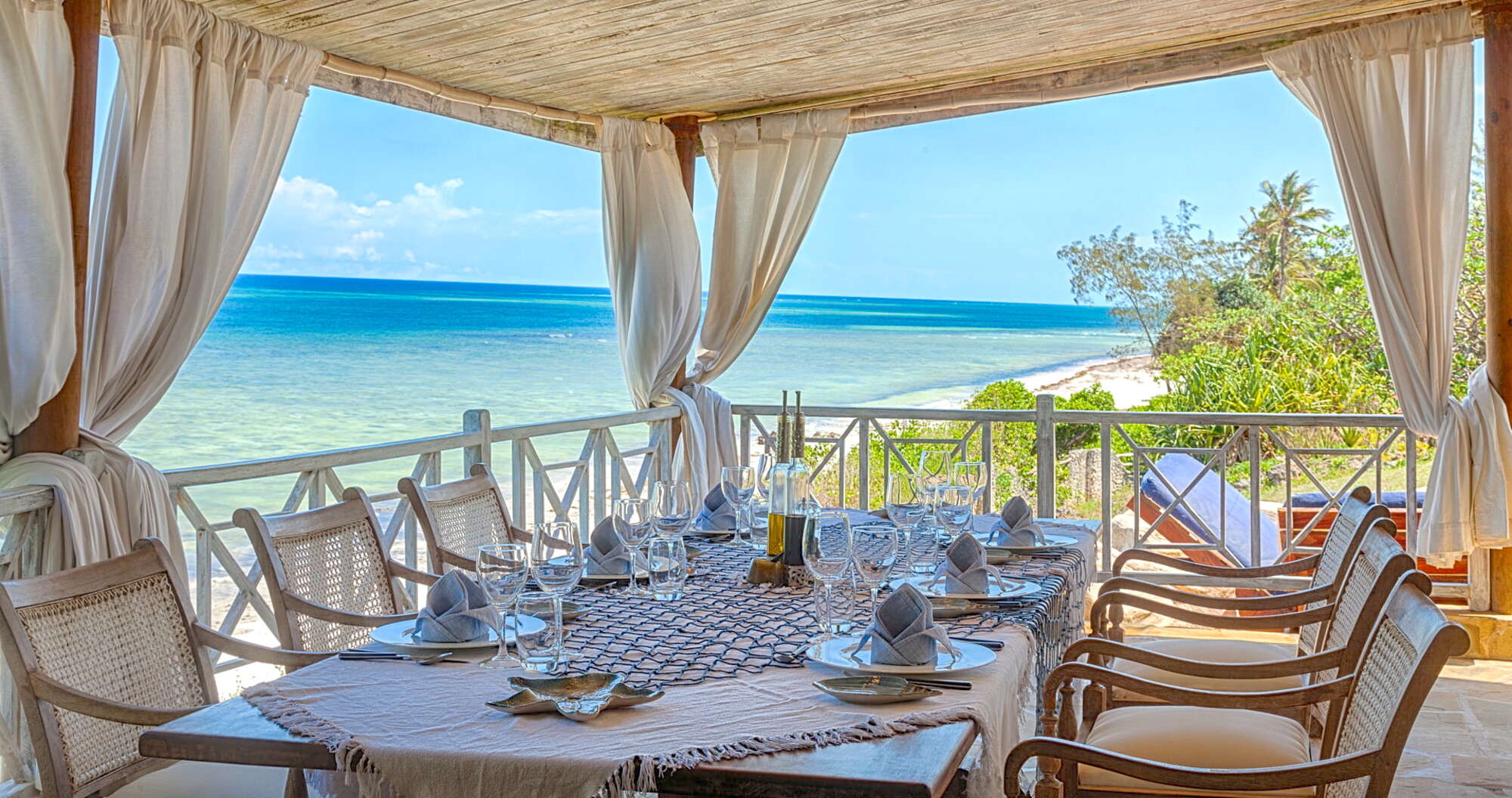
Alfajiri Villas
Alfajiri Villas is an exclusive, owner-run, hideaway property consisting of three unique villas in a central part of the north end of Diani Beach.
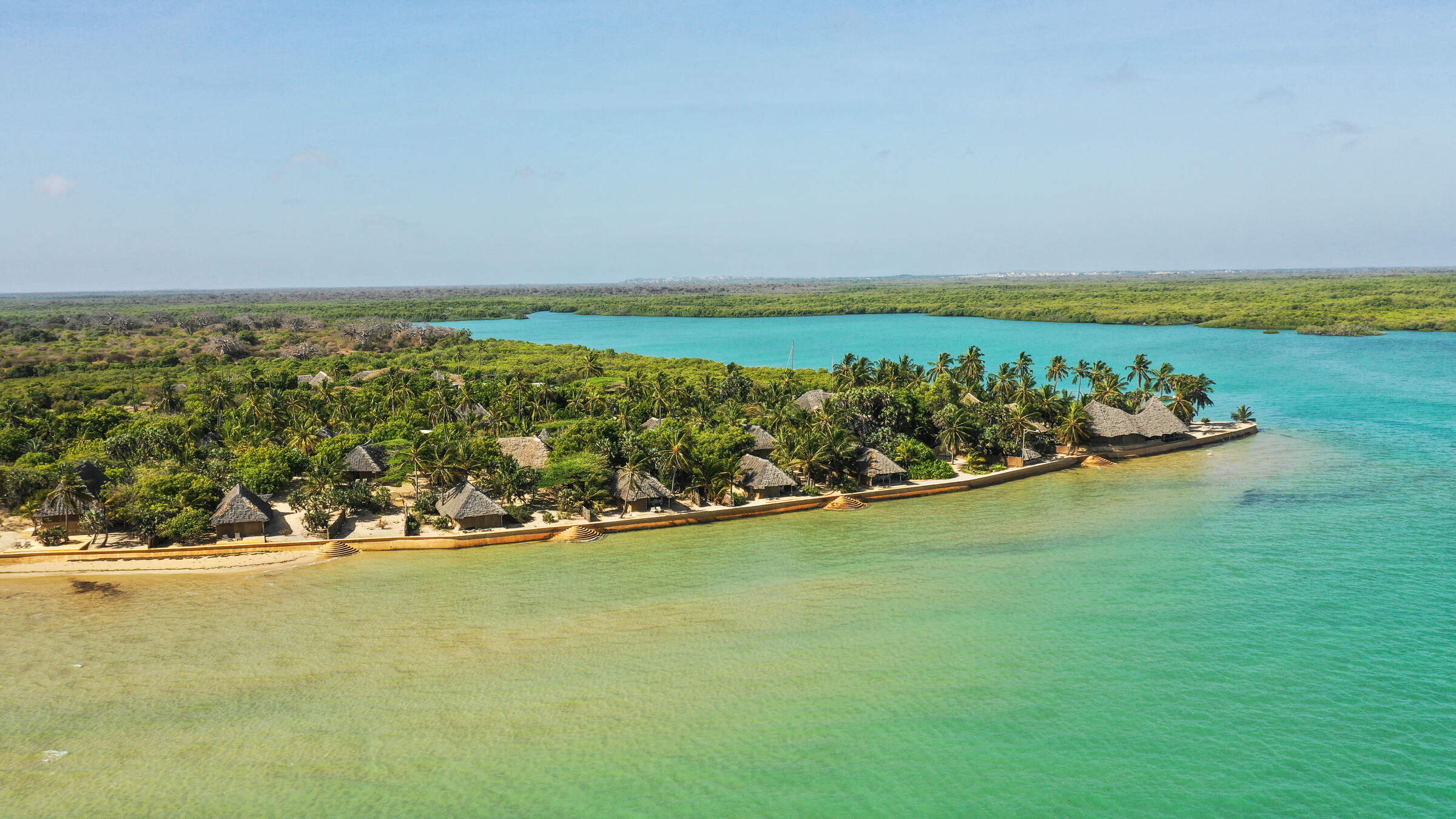
Manda Bay
Manda Bay is a luxury beach hideaway in a remote corner of an island in the Lamu archipelago, on Kenya's northern coast. It has a huge range of water sports on offer.
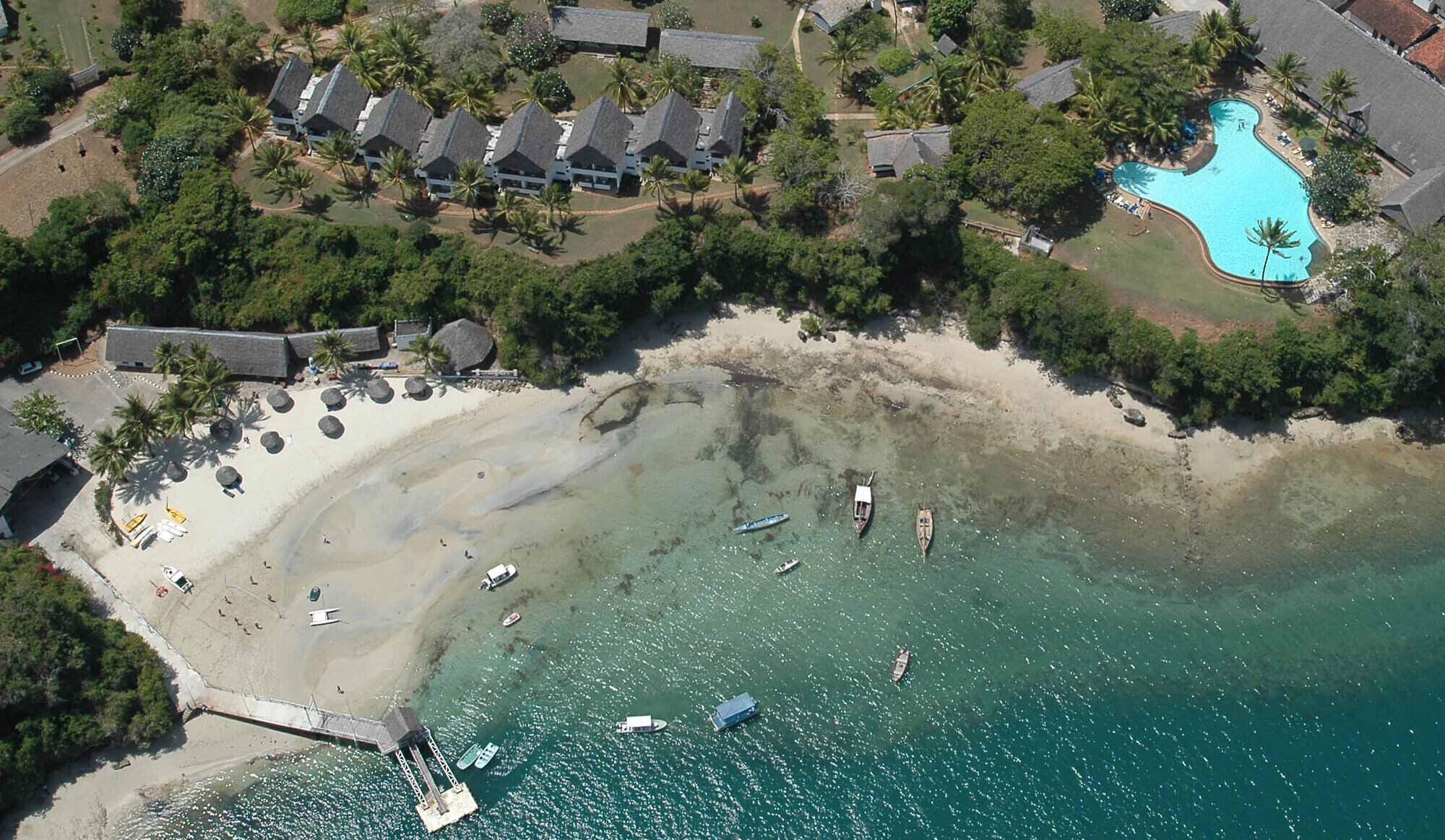
Mnarani Club
The Mnarari Club is located towards the seaward end of the beautiful Killifi Creek, and is an enduring favourite on the Kenya coast.
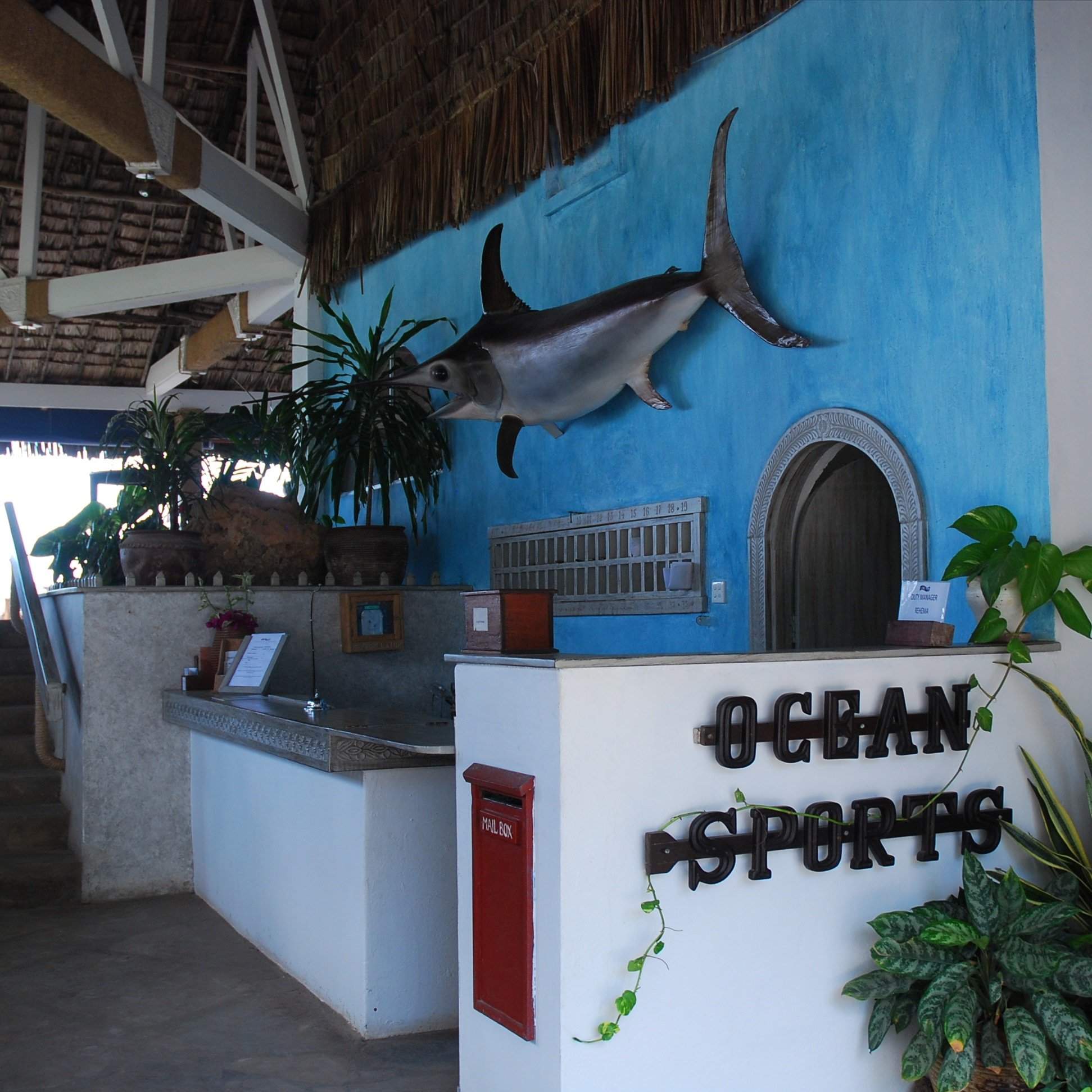
Ocean Sports
Ocean Sports is long-established and popular beach hotel right on one of Watamu's famous and beautiful bays.
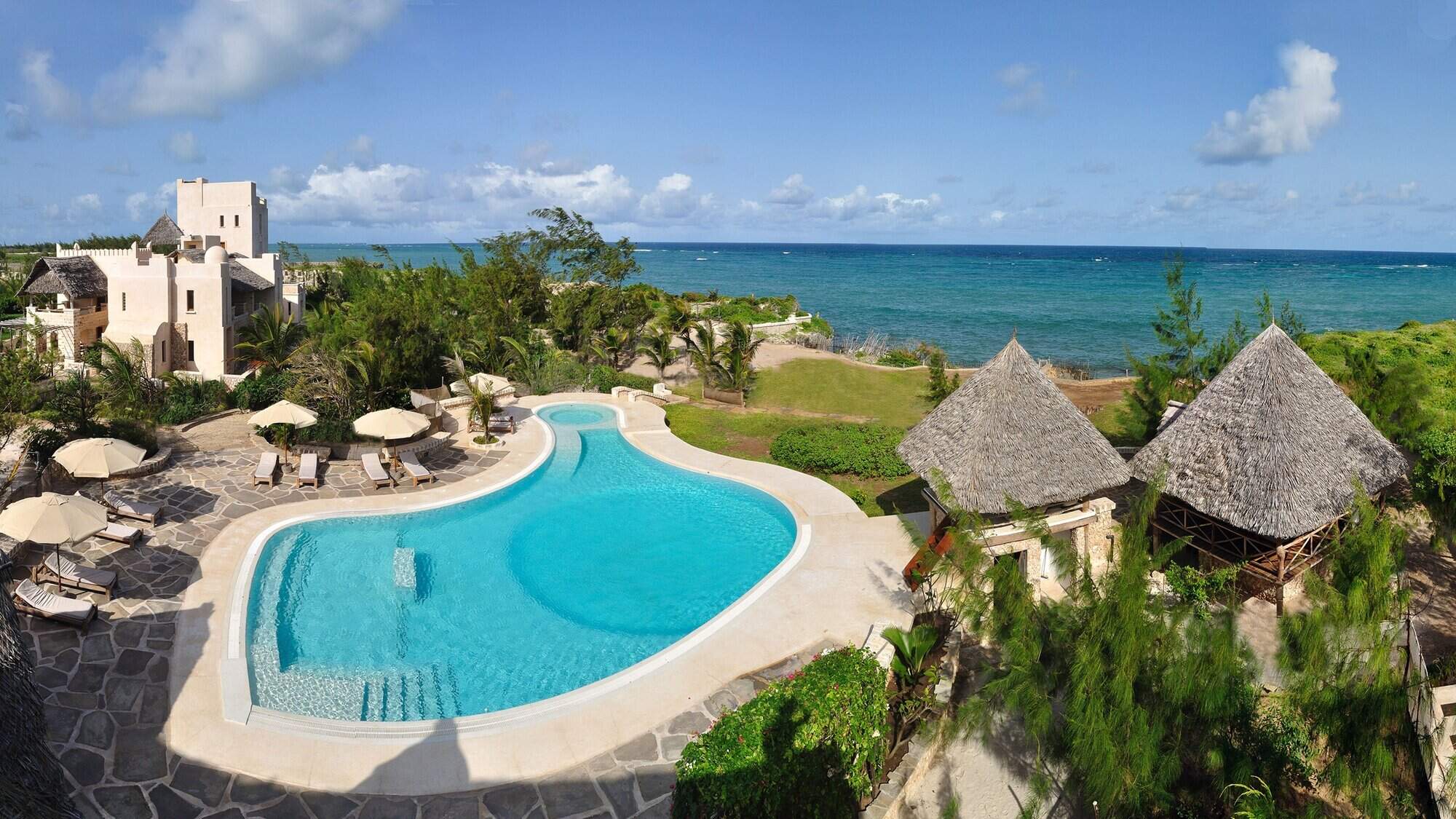
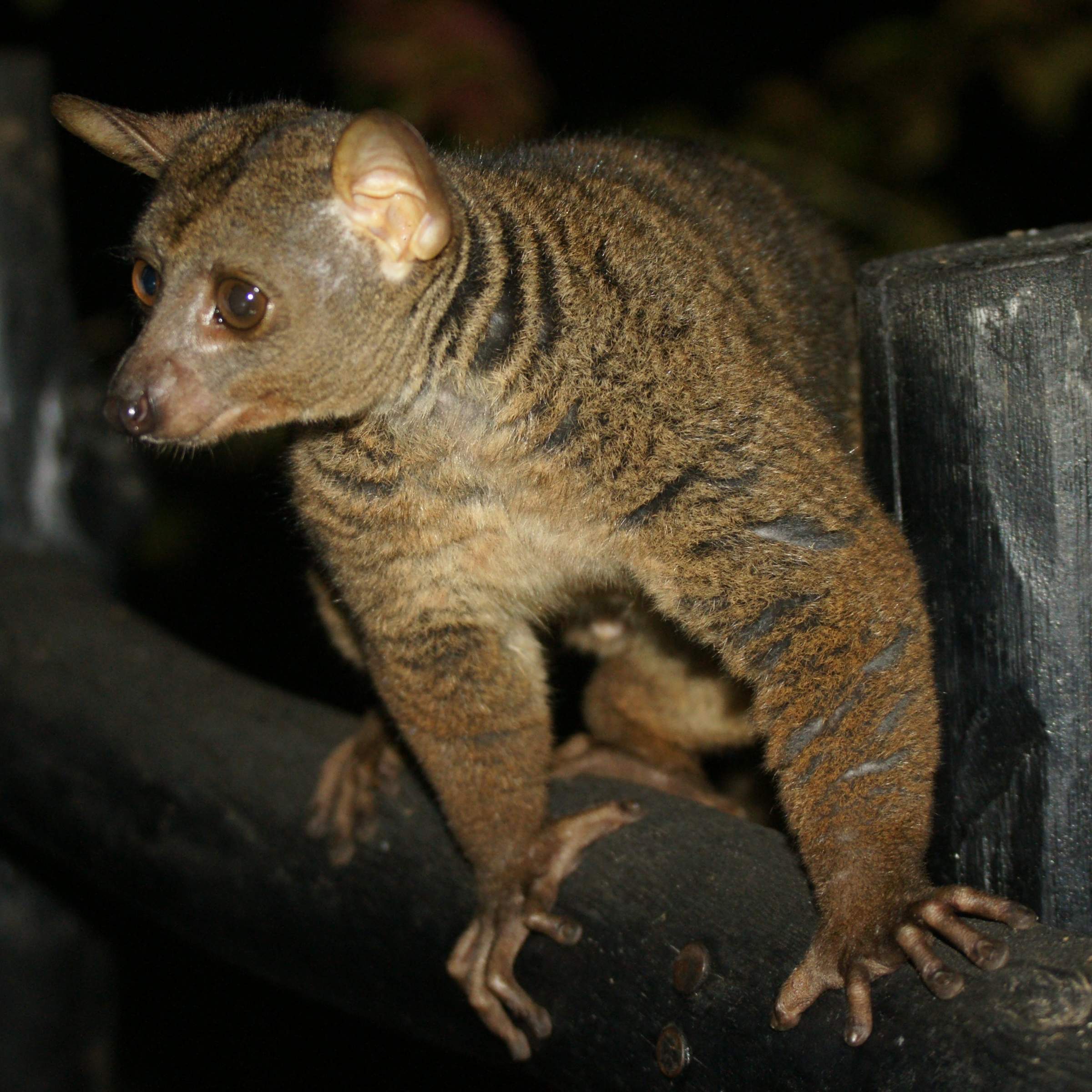
Shimba Lodge
Shimba Lodge is a picturesque tree-hotel overlooking a forest waterhole in Shimba Hills National Park, with an aerial walkway and abundant wildlife.
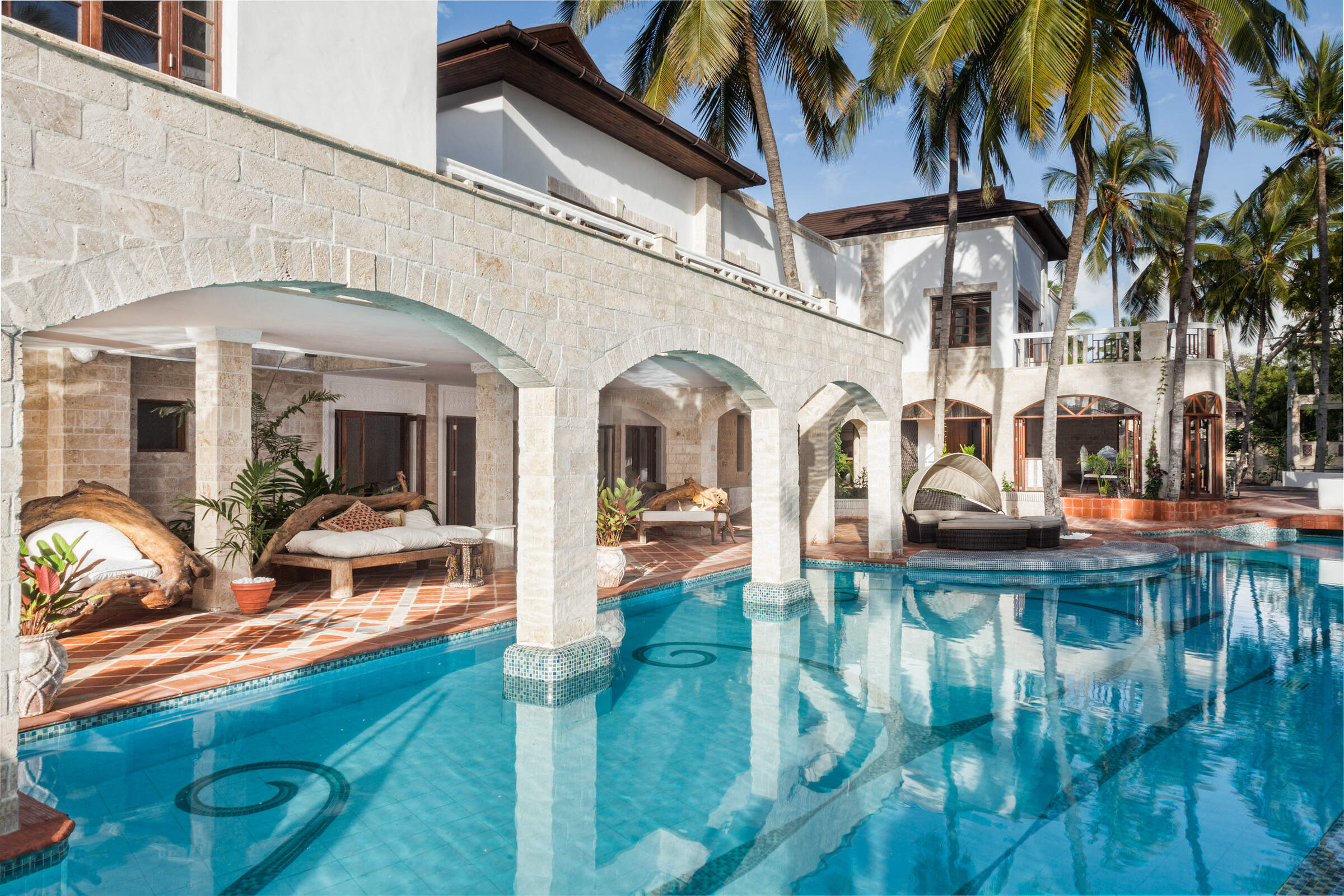
The Maji
The Maji is a small, well managed beach hotel on the northern stretch of Diani Beach in southern Kenya.
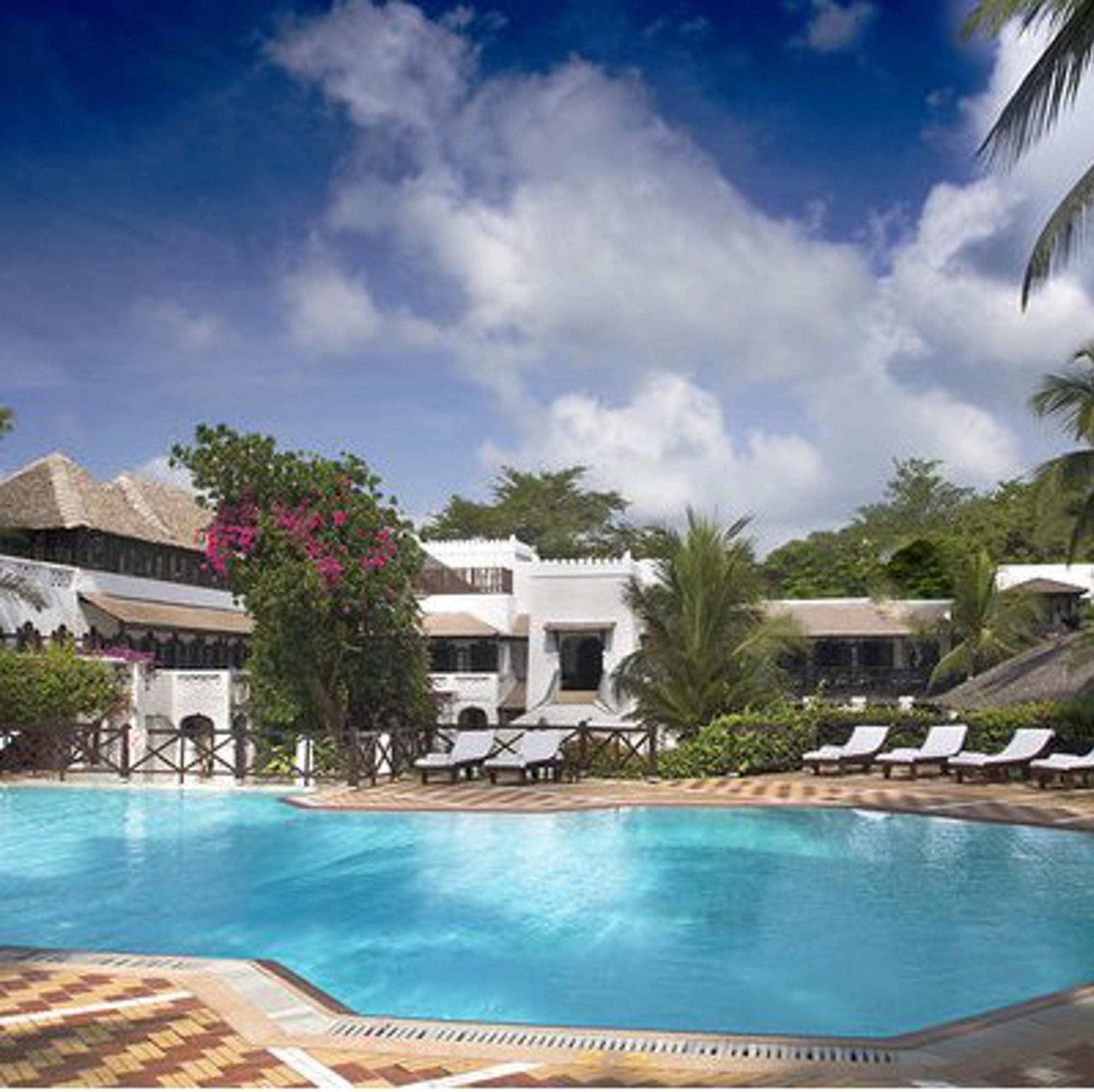
Serena Beach Resort
Serena Beach Resort is a large beach hotel on Shanzu Beach, north of Mombasa town, on Kenya's Indian Ocean coast.
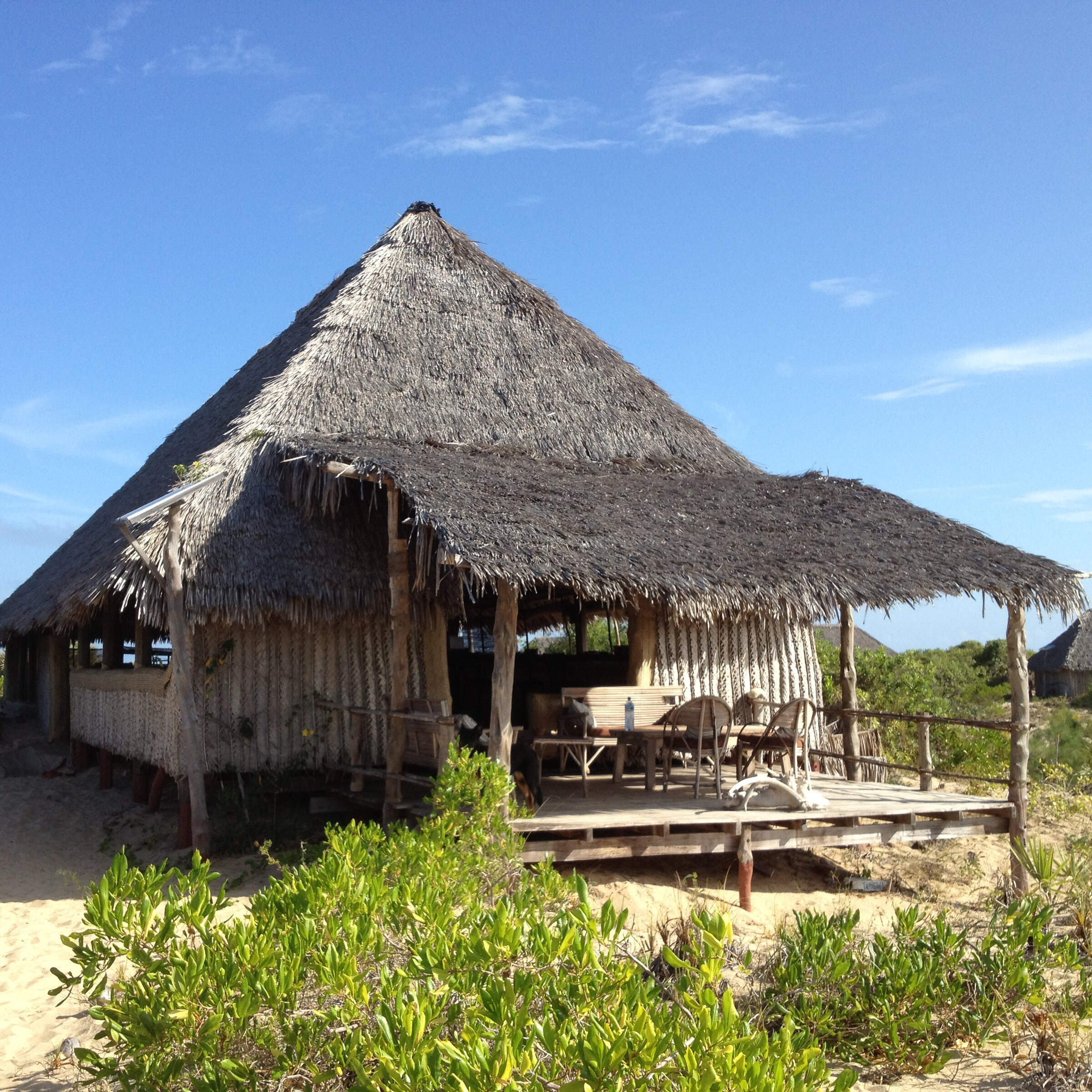
Kizingo
Kizingo is an owner-managed, rustic, barefoot beach lodge on the southwest tip of Lamu island.
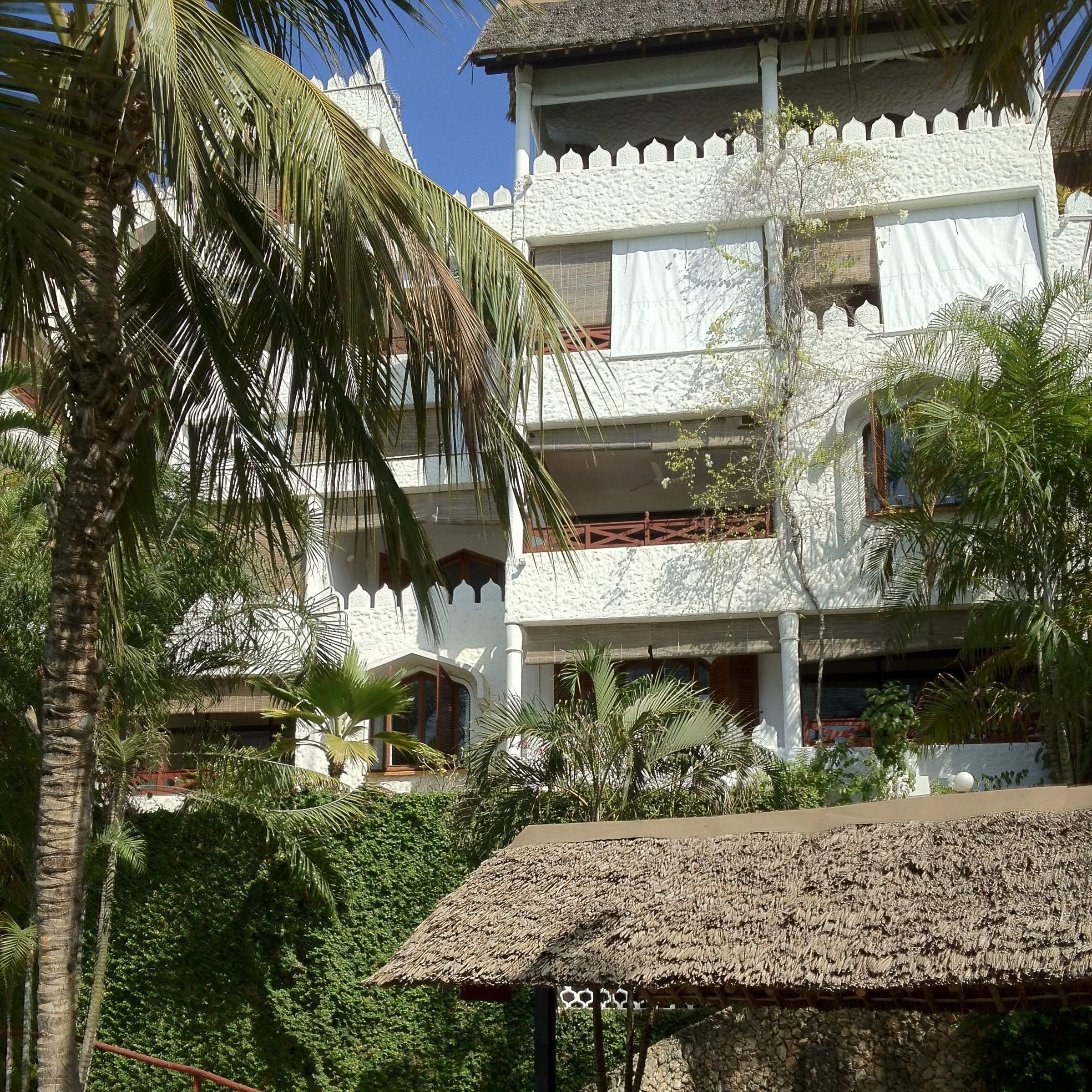
Tamarind Village
Tamaarind Village is a well managed apartment complex close to Mombasa city, with excellent restaurants, pools and visitor services.
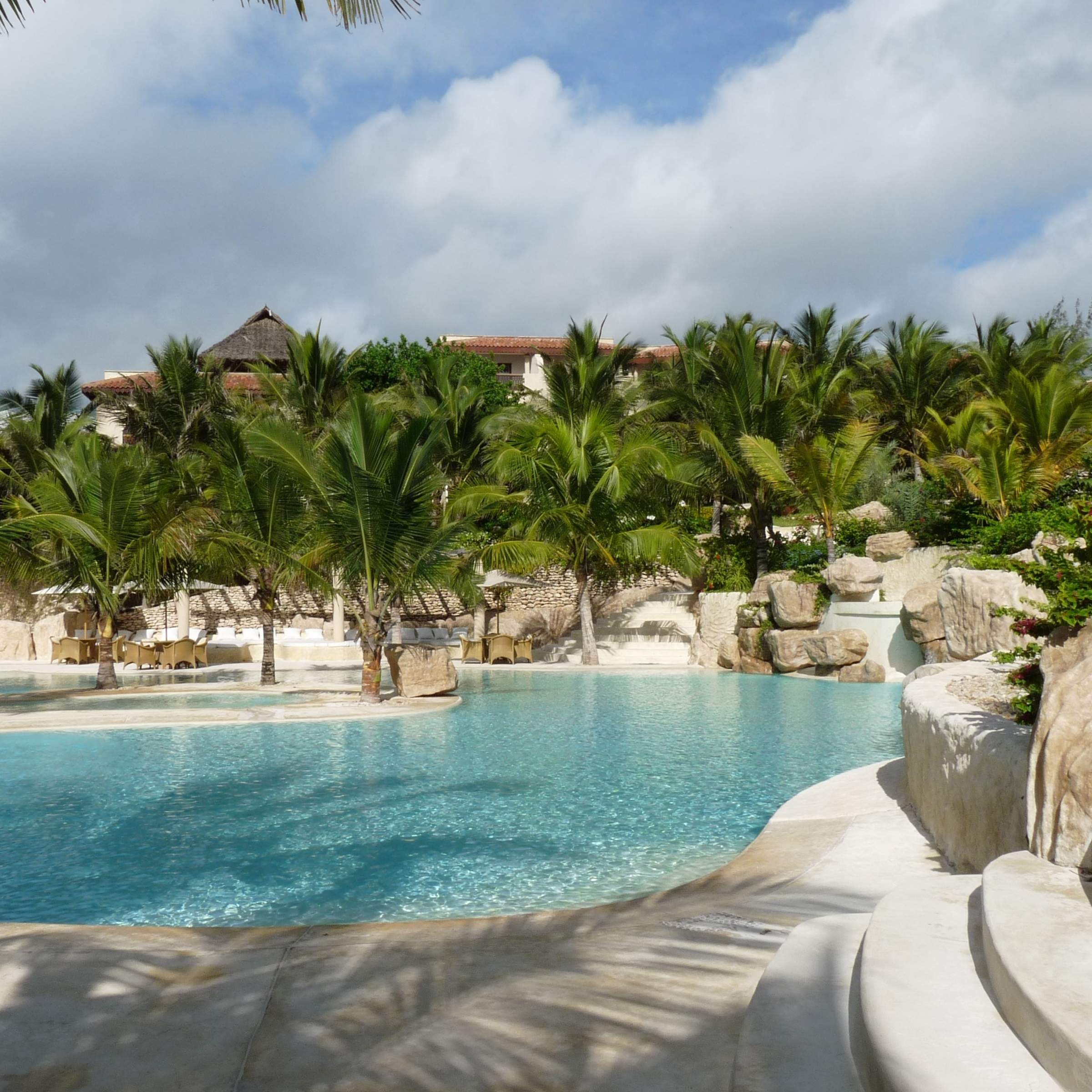
Swahili Beach
Swahili Beach is one of the biggest resort hotels on Diani Beach, with a spectacular lobby and cascading swimming pool.
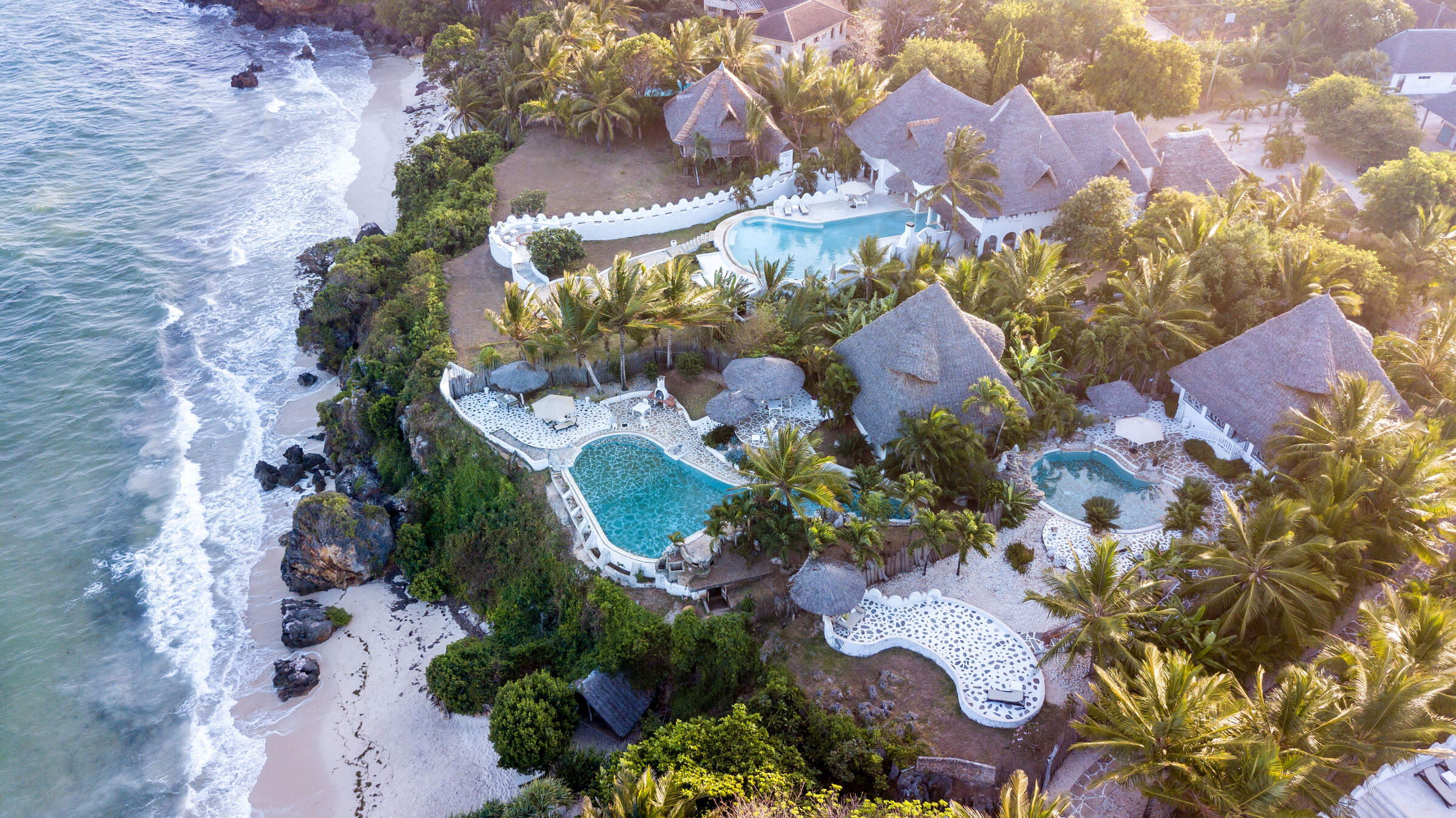
Msambweni Beach House
Msambweni Beach House is a secluded and luxurious boutique hotel on the southern Kenya coast, south of Diani Beach.
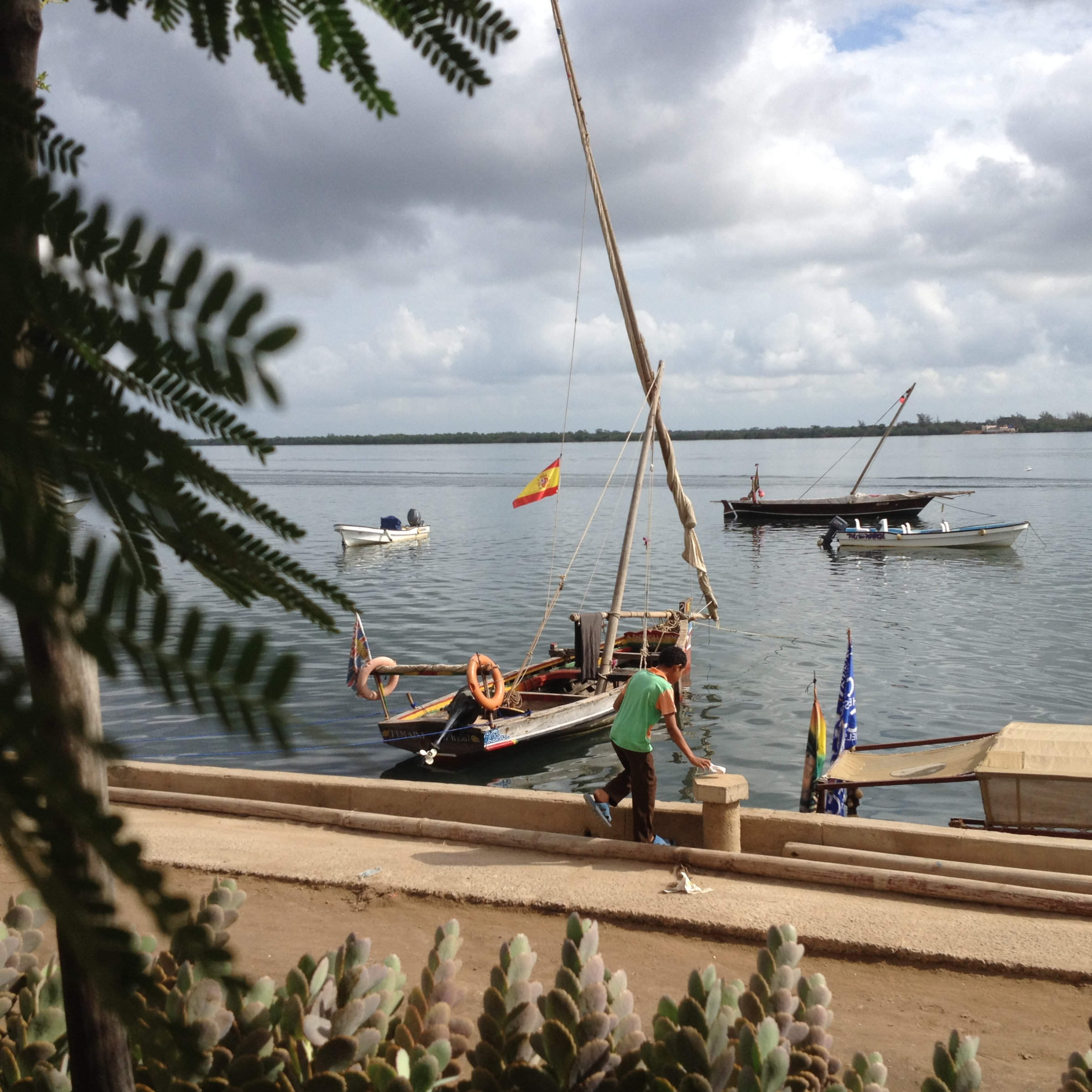
Lamu House
Lamu House is a boutique hotel on the waterfront in Lamu town, with a swimming pool, bar and terrace restaurant.
When to go to Kenya Coast
Our month by month guide: What it's like to visit The Majlis in Kenya Coast
Jan
Feb
Mar
Apr
May
Jun
Jul
Aug
Sep
Oct
Nov
Dec
Kenya in January
Clear, hot days and warm nights make this high season a popular time for safaris and it’s also good for diving and snorkelling as water clarity is excellent and gets better as the dry season progresses. Most lodges and tented camps treat January after the New Year week is over, as mid-season, making it a good compromise in terms of value for money with reasonably reliable, dry weather and some greenery left in the landscape.
Expert Africa bases its description of climate and weather in January, like the other months of the year, on the climate records of roughly the last 100 years, and it's fair to say that the weather and seasons since the beginning of this century have been highly irregular and unpredictable.
- On average, January is the second driest month of the year
- Elephants dig waterholes in the dry riverbed in the Samburu reserve.
- Wildebeest and many antelope have their calving season, to February.
- Migrant birds are seen in huge numbers, especially in the Rift Valley.
- Sea water clarity around the coral reefs generally good.
Our view
Fantastic: the very best time to visit
Weather in January
Kenya in February
With the short dry season well established, the grass grazed down and wildlife gathering close to water points, this is still a good time for a safari. Good water clarity in the Indian Ocean's coastal waters makes for excellent diving and snorkelling conditions.
Expert Africa bases its description of climate and weather in February, like the other months of the year, on the climate records of roughly the last 100 years, and it's fair to say that the weather and seasons since the beginning of this century have been highly irregular and unpredictable.
- On average, February is the driest month of the year.
- It’s sometimes possible to swim with whale sharks at Diani Beach.
- Migrant birds are still seen everywhere, especially near water.
- This is usually peak calving season for wildebeest and many antelopes.
- This month is often the hottest of the year, especially on the coast.
Our view
A very good time to visit
Weather in February
Kenya in March
Hot, increasingly humid weather – with good diving and snorkelling conditions at the start of the month – gives way to rains and lower accommodation costs. Expert Africa bases its description of climate and weather in March, like the other months of the year, on the climate records of roughly the last 100 years, and predicting the seasons since the beginning of this century has been difficult.
March is the month when – traditionally – intensely hot conditions build up until a cloudburst finally happens at the end of the month or in early April, to relieve the humidity. As ever, regional variations across the country can greatly impact on visitors' experiences.
- Sea-water clarity is best for diving before the long rains start.
- Visitor numbers are low, though the Easter holidays can be busier.
- Night skies can be scintillatingly clear in early March.
- Cropped down savannah grasses can make it easier to see the wildlife.
- Temperartures climb high, especially at lower elevations.
Our view
A good time to visit, with pros & cons
Weather in March
Kenya in April
April sees the full onset of the southeast monsoon wind or kusi, which heralds the long rains. Temperatures drop soon after the rains are established and you’ll often have facilities largely to yourself in this more affordable low season, sometimes known as the "green season". The bush quickly springs to life, with greenery sprouting almost before your eyes. While you're likely to get a fair number of heavy showers, the breaks in the rain can yield sparklingly clear conditions.
With the dust settled and bright sun piercing the clouds, conditions can be sublime for photography, especially first thing in the morning or in the late afternoon with another storm brewing. You may be lucky, or you may find conditions very wet and muddy.
- A wet month, the coast often gets more than 300mm (12in) of rain.
- Sunny spells can provide great light for photography.
- Buffalo and zebra calving season often happens in this month.
- Baby crocodiles hatch, for example on Central Island in Lake Turkana.
- Palearctic migrant birds gather to fly north to breeding grounds.
Our view
A time to avoid if possible
Weather in April
Kenya in May
While game viewing can be trickier as vegetation runs riot, between the cloudbursts the colours and light are great for photography at this time of year. Expert Africa bases its description of climate and weather in May, like the other months of the year, on the climate records of roughly the last 100 years, and while it's reasonable to expect heavy rains in many parts during this month, especially on the coast, the rains don't always come evenly or in some areas come at all.
In an El Niño year, the so-called long rains that normally are established across much of the country by May can be meagre, to the despair of farmers. On the other hand in a La Niña year, the long rains can bring floods. On the coast, the monsoon winds make the climate much more predictable, with heavy rains common throughout this month.
- Frogs breed in the ponds in the Arabuko Sokoke Forest near Watamu.
- Wildebeest, impala and other grazers are in rut (the breeding season).
- Kilimanjaro looks its best as heavy rain falls as snow on the summit.
- There's a sharp peek of rainfall on the coast with many rainy days.
- Accommodation prices are uniformly low, while some camps close.
Our view
A time to avoid if possible
Weather in May
Kenya in June
The rains give way to cloudy, cooler weather, often making for comfortable conditions by the end of the month, especially in the highlands. Starting from mid-June or the beginning of July and running until the end of October, this is the high season, and accordingly has higher accommodation rates and – at least until early September – higher numbers of visitors.
While the early part of June can often be rainy on the coast, it can be a great time to go on safari, with fresh greenery, many young animals and good photographic conditions with clear air.
- The Taru Desert, inland from the coast, is carpeted with flowers.
- The Lake Turkana Cultural Festival is held in Loiyangalani.
- Madaraka Day (commemorating self rule) is 1 June.
- The annual Lewa marathon runs a course through the wildlife.
- The Diani Rules "sports" event rips up the rulebook at Diani Beach.
Our view
A good time to visit, with pros & cons
Weather in June
Kenya in July
Kenya’s “winter" season sets in (winter is a misnomer but locals feel the change), and the highlands can be rather grey. Skies are often cloudy and the days can be surprisingly cool, with an average daytime high in many highland safari areas of 15-20°C and night-time temperatures dropping below 10°C in Nairobi and the highlands. Lower parts of the country and the coast are usually warm and dry, typically reaching highs of around 25°C with lows in the high teens.
As this is the start of the high season, coinciding with the usual arrival of the wildebeest migration in the Maasai Mara, July is a busy month. Ask your Expert Africa specialist to advise on how to avoid the crowds, which is not that difficult to do.
- The wildebeest migration usually reaches the Maasai Mara in July.
- Simbi Lake (Kisumu) and Crater Lake (Naivasha) can attract flamingoes.
- Watersports start to pick up and some surfing is possible at Malindi.
- Afternoon thunderstorms are a common feature in the Maasai Mara.
- The sea can be choppy along the coast, making diving difficult.
Our view
A good time to visit, with pros & cons
Weather in July
Kenya in August
The Great Migration fills the plains of the Maasai Mara, and school’s out, so the park roads are full of tourists – ask your Expert Africa specialist for advice on crowd avoidance tactics. Choose a private conservancy rather than a public national park or national reserve for quieter conditions.
Like July, August is generally mild and relatively dry in the safari areas, but it can be very chilly in the highlands, even in the middle of the day, and hail occasionally falls above altitudes of around 2,400m (8,000ft). Nairobi can be disappointingly overcast, with low cloud.
- Apart from Christmas holidays, this is the busiest month of the year.
- Late August sees peak wildebeest drama at the Mara River crossings.
- Coastal winds are good for kite- and wind-surfing.
- Few mosquitoes are around at this generally dry time of year.
- The annual Camel Derby takes place in the Samburu capital, Maralal.
Our view
A good time to visit, with pros & cons
Weather in August
Kenya in September
The skies clearing of cloud signals the start of hot, dry weather with little chance of rain – and, after the first few days of the month, far fewer visitors – making the latter part of September a good time for a quieter safari. While early September is often good for dramatic migration crossings along the Mara River, you might consider deliberately postponing your trip until later in the month, when the migration can still be very impressive and visitor numbers fewer.
If tourist surges are somewhat predictable, however, the patterns of the wildebeest migration are more volatile, and like all of Expert Africa's climate and weather assessments, they are based on accumulated years of experience rather than guaranteed certainty.
- This is still high season, with prices to match.
- Many river crossings take place on the Mara river in both directions.
- Natural bush fires flush out insects and small animals for predators.
- The Rift Valley Music Festival takes place by Lake Naivasha.
- With school holidays over by early September, late-month is quieter.
Our view
Fantastic: the very best time to visit
Weather in September
Kenya in October
Still hot, mostly dry and not too busy, this is many people’s preferred month for a safari, and it’s also good for diving and snorkelling. The wildebeest and zebra herds of the great migration are often still to be seen, though in dwindling numbers. The swamps of Amboseli attract thirsty wildlife including large herds of elephants.
While we wouldn't expect much rain across most of the country this month, the climate has become so unpredictable that you can never say never, and the possibiity of the short rains – usually associated with November to mid-December, starting early, can't be discounted.
- This month sees the tail end of the great migration in the Mara.
- Palearctic migrant birds start to arrive, staying until March.
- Turtle nests hatch at Watamu, until November.
- Amboseli elephants focus on the swamps for their daily water.
- The Indian Ocean monsoon winds turn from southeast to northeast.
Our view
A very good time to visit
Weather in October
Kenya in November
The northeast monsoon wind or kaskazi heralds the start of the “short rains", usually some time in the second half of the month. From November to mid-December, this is the low season, and accordingly has lower accommodation rates and lower visitor numbers. Across most of the country you can expect warm, somewhat cloudy weather, with occasional heavy showers and localised flooding.
Expert Africa bases its description of the climate in November, like the other months of the year, on the records of roughly the last 100 years, and it's fair to say that the seasons since the beginning of this century have been highly irregular and unpredictable: some years the short rains don't come at all, or don't reach every part of the country. In an El Niño year, the November short rains can be very heavy, but in a La Niña year, they can fail completely.
- Swimming with dolphins in Lamu can be done from now until April.
- Birders gather at Ngulia in Tsavo West to ring Palearctic migrants.
- The Lamu Cultural Festival takes over the town and Lamu Creek.
- Agricultural shows often take place regional market towns.
- This is low season, so camps can be great value, with special offers.
Our view
A good time to visit, with pros & cons
Weather in November
Kenya in December
In a typical December, the rains usually finish by middle of the month, leaving the landscape looking its best, under clear blue skies, and heralding the start of the second peak tourist season from around 20 December to the first week of January. Our assessment of the likely weather in December, like the other months of the year, is based on climate records, and it's fair to say that the seasons since the beginning of this century have been highly irregular and unpredictable.
Christmas can sometimes be wet, but most years the rains have finished a week or two earlier, with the festive season ushering in the perfect combination of clear skies and sunshine by day and starry nights.
- Christmas and New Year are busy, with the lodges and camps full.
- Rates are highest after 24 Dec, with supplements on public holidays.
- Republic Day and Independence day are celebrated on 12 December.
- Good kite- and wind-surfing restarts, with strong northeasterly winds.
- Mango season begins, providing excitement for primates and elephants.
Our view
A good time to visit, with pros & cons
Weather in December

Looking for inspiration on where to travel next?
Visit our trip chooser to explore your options and find inspiration for your perfect African adventure
Inspire me